
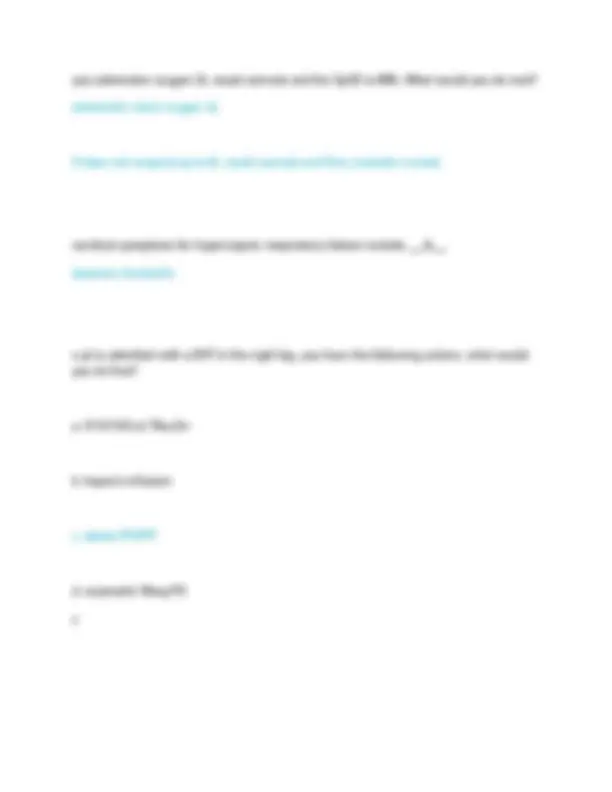
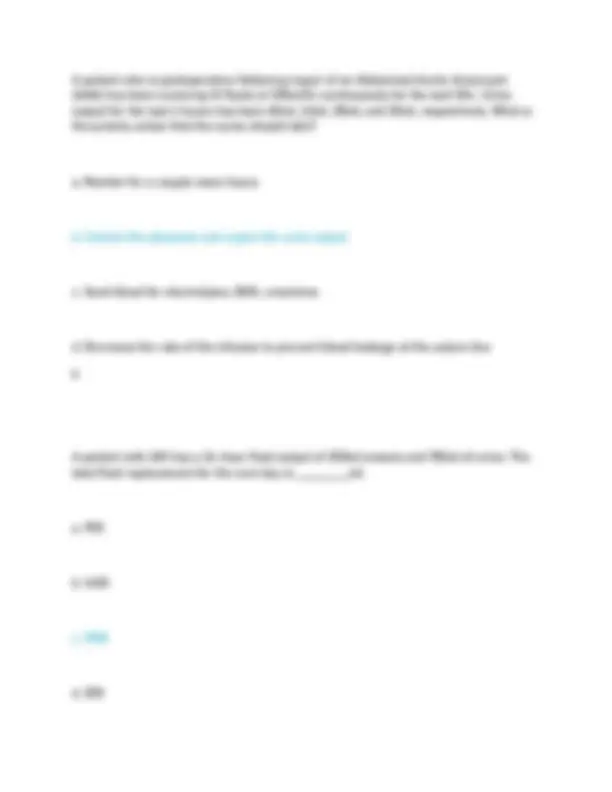
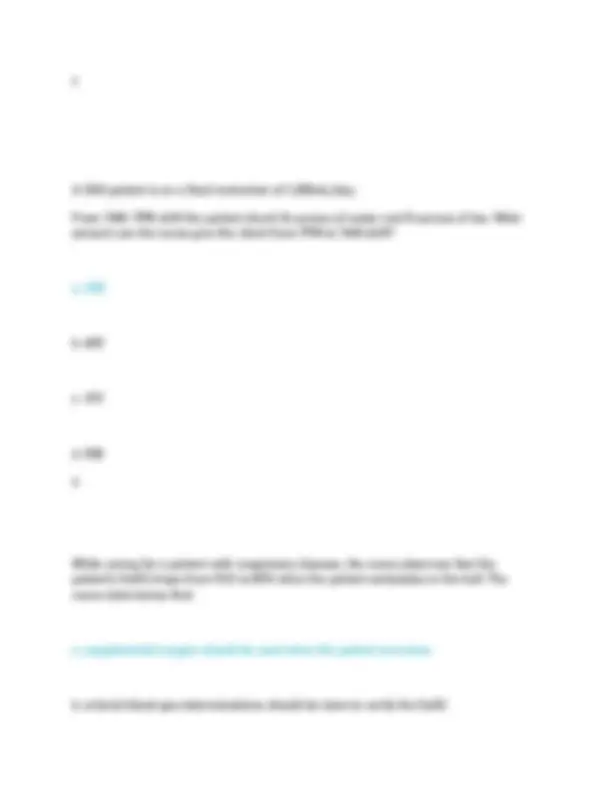

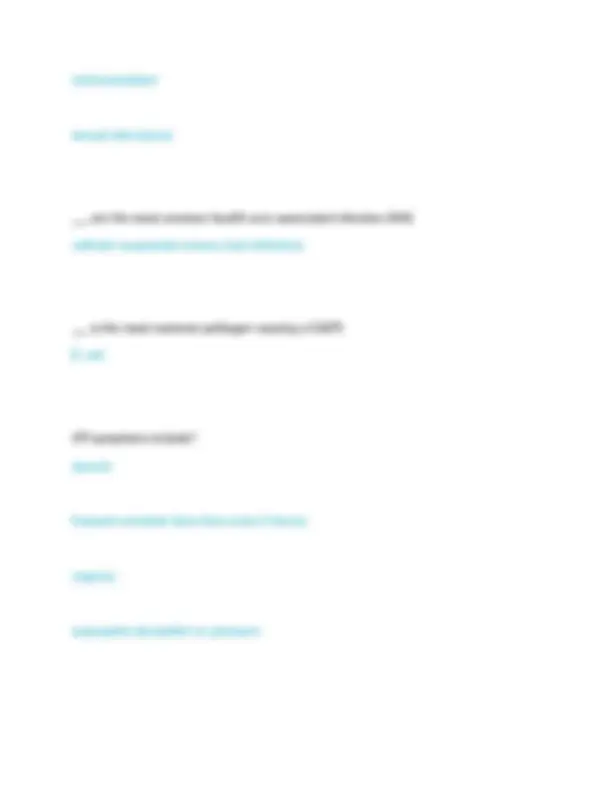
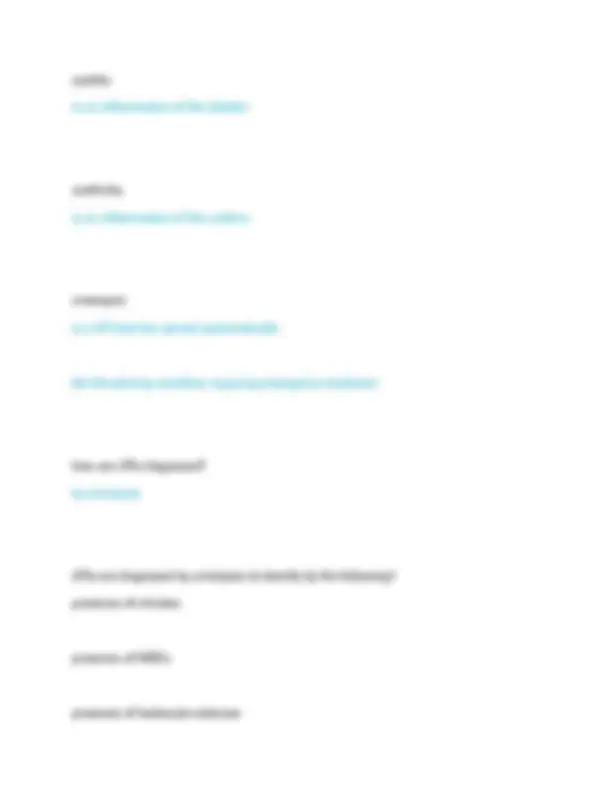
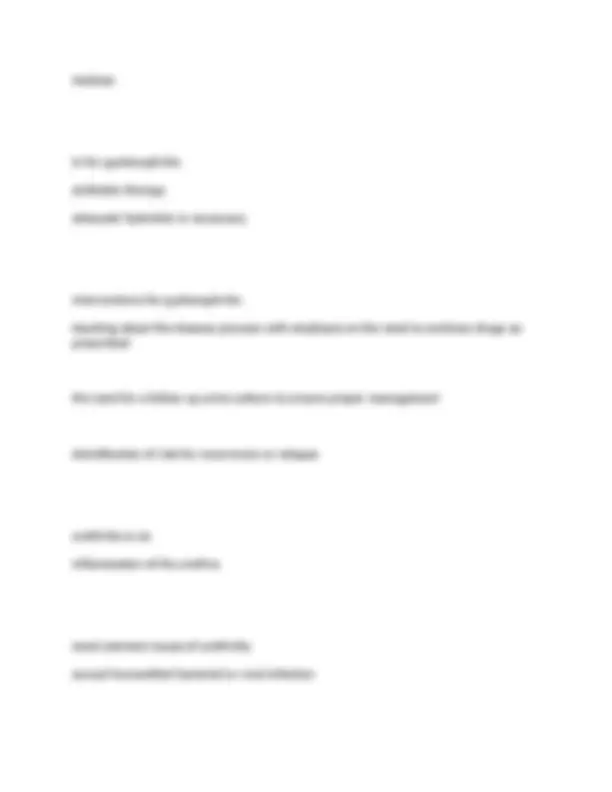
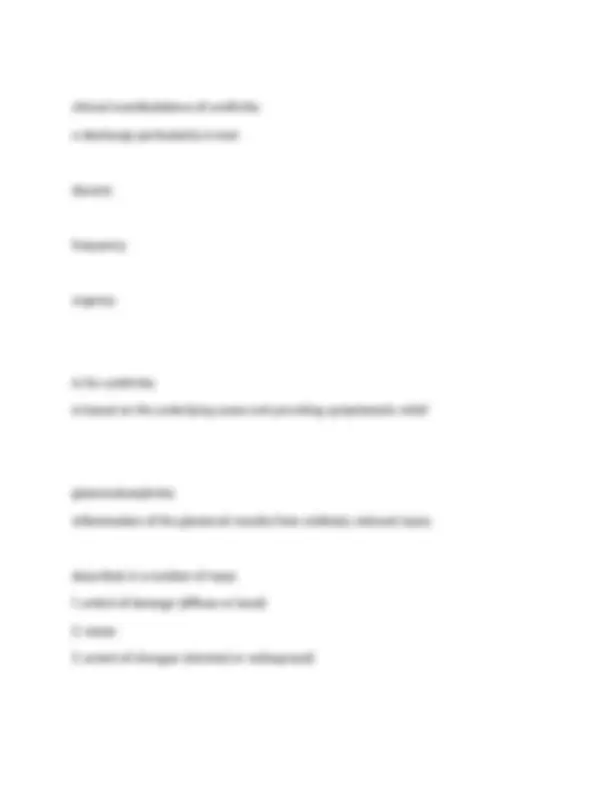
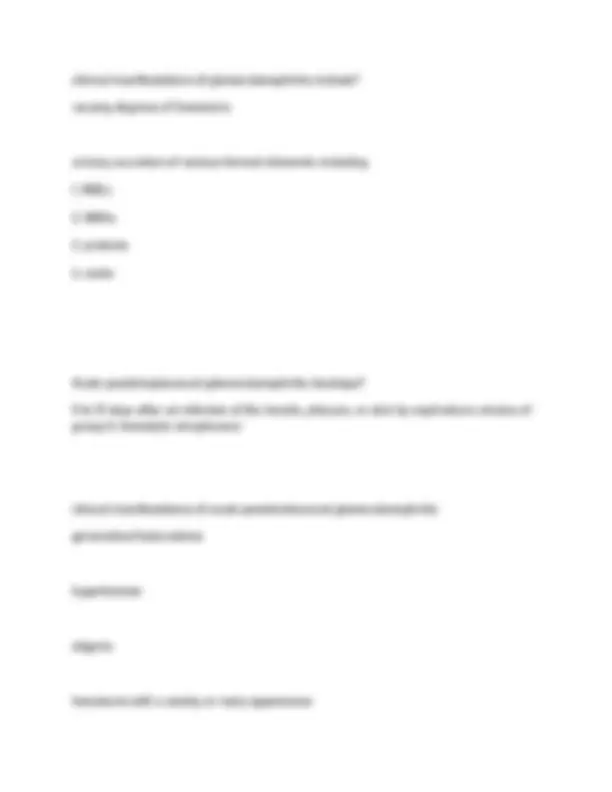
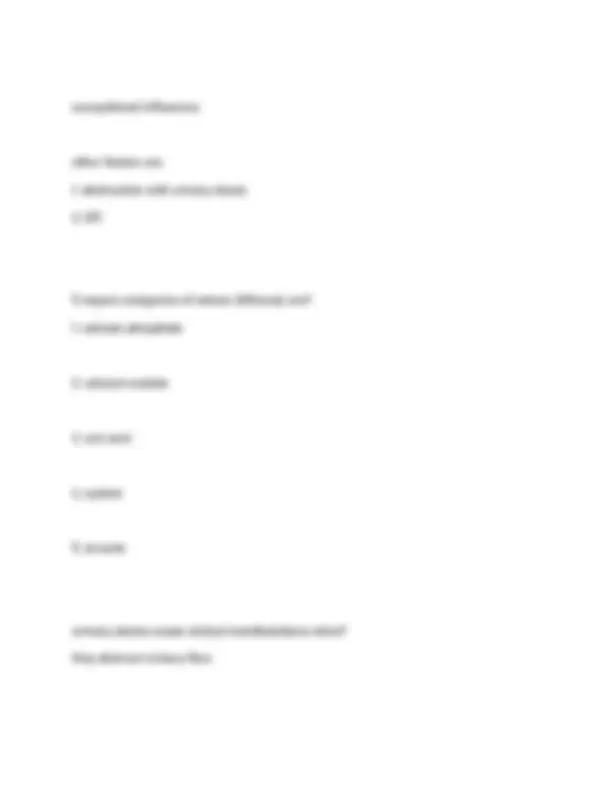
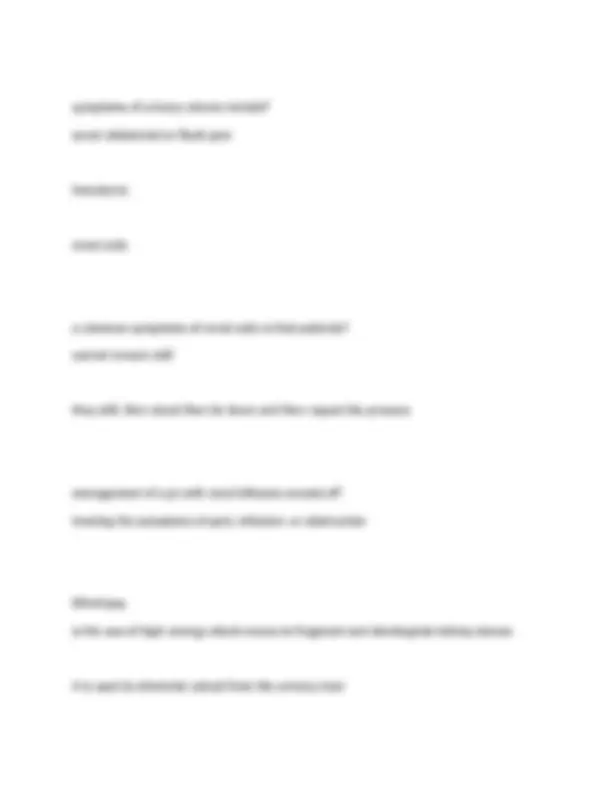
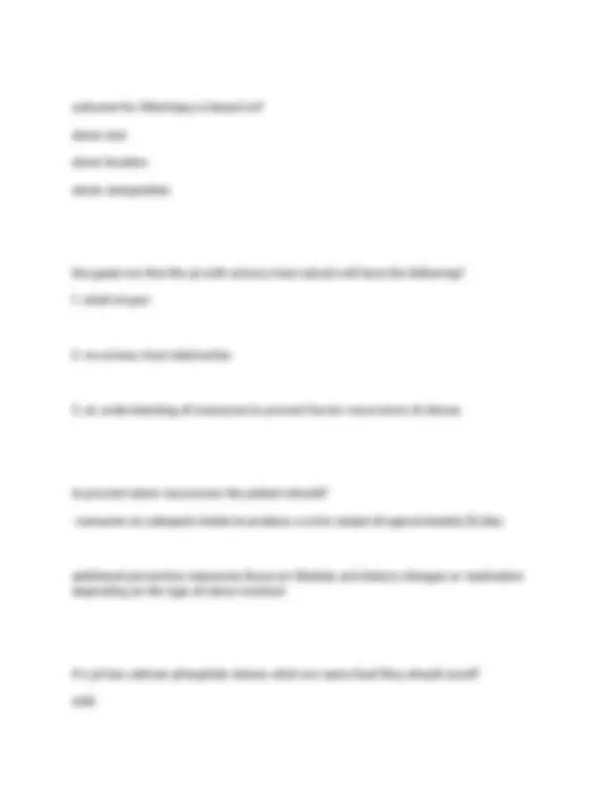
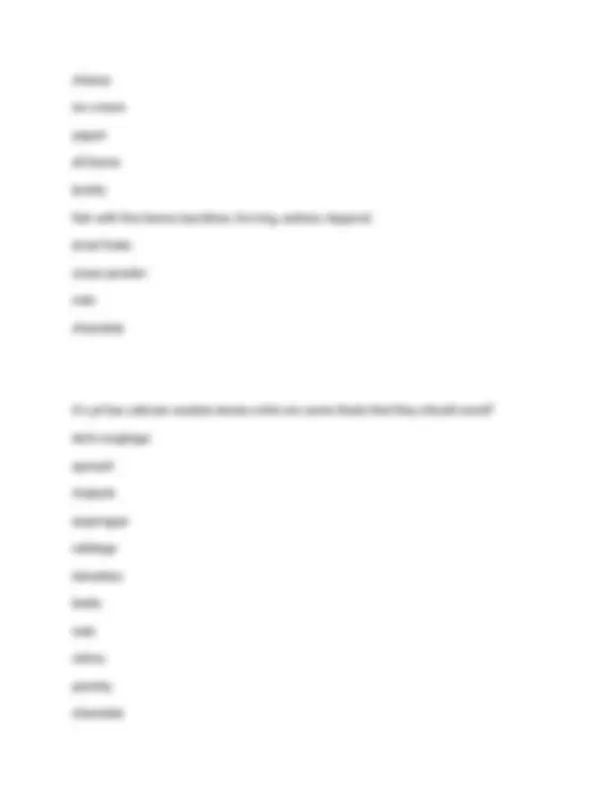
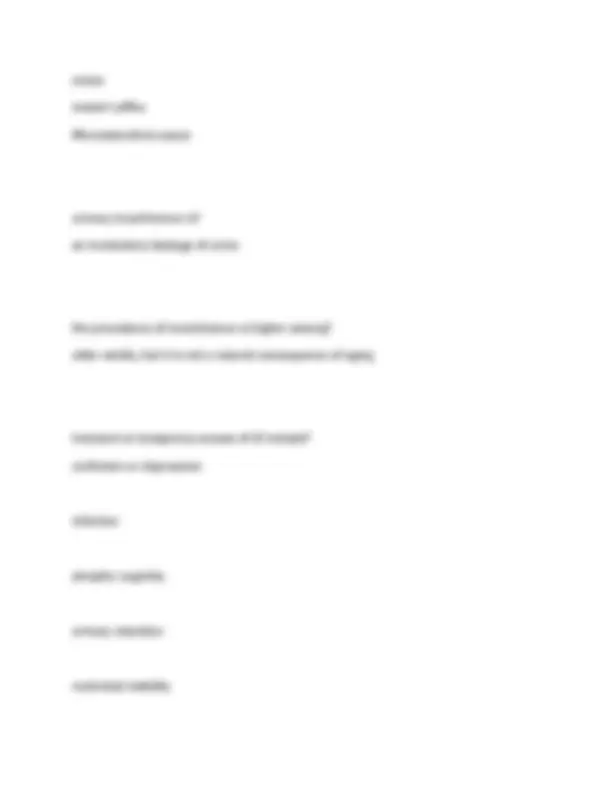
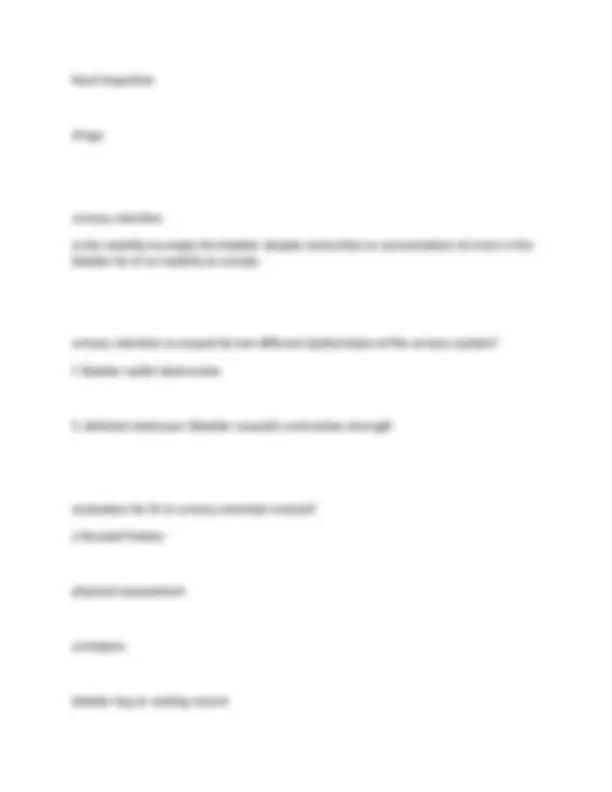
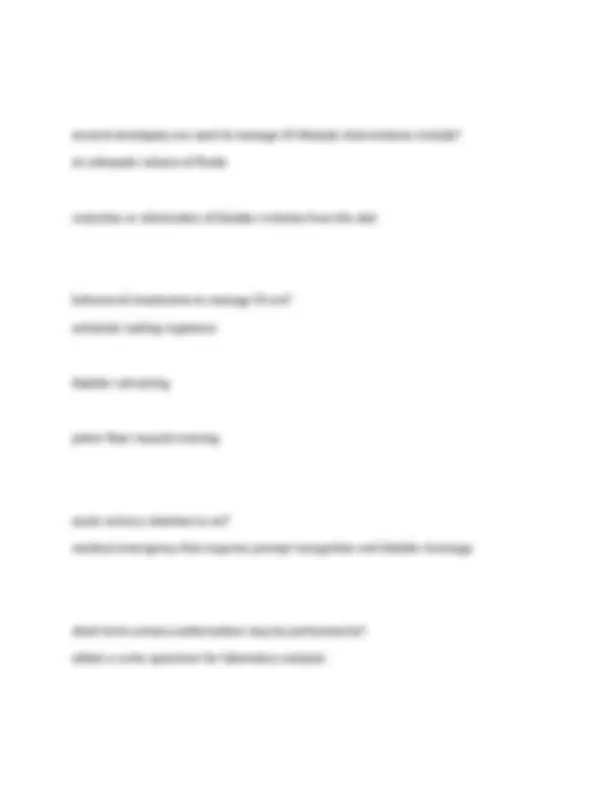
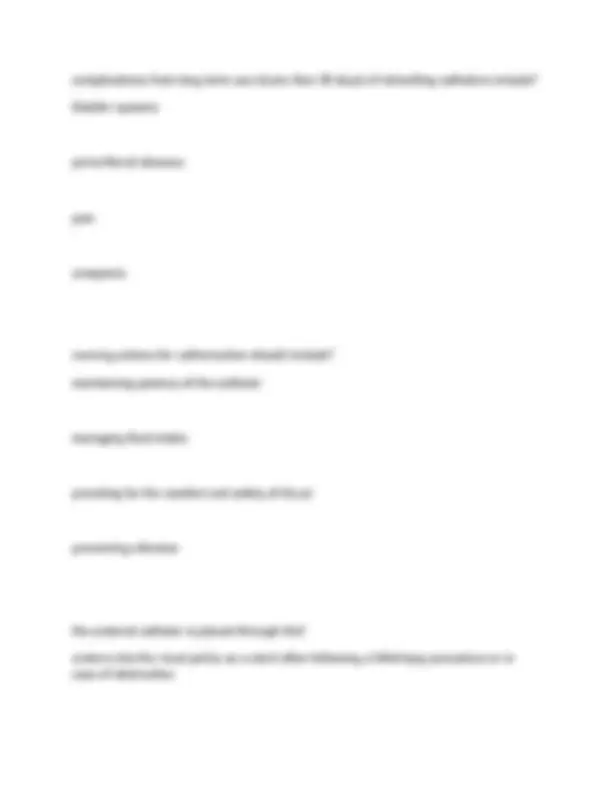
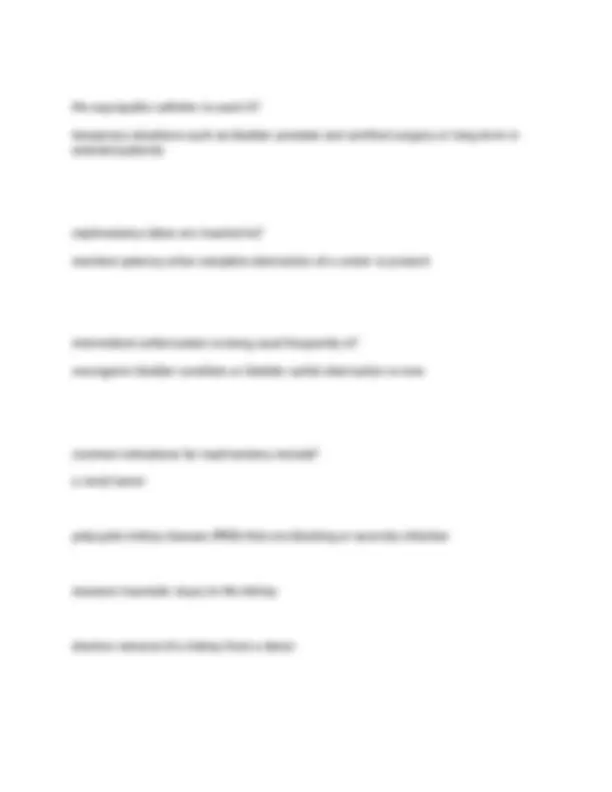
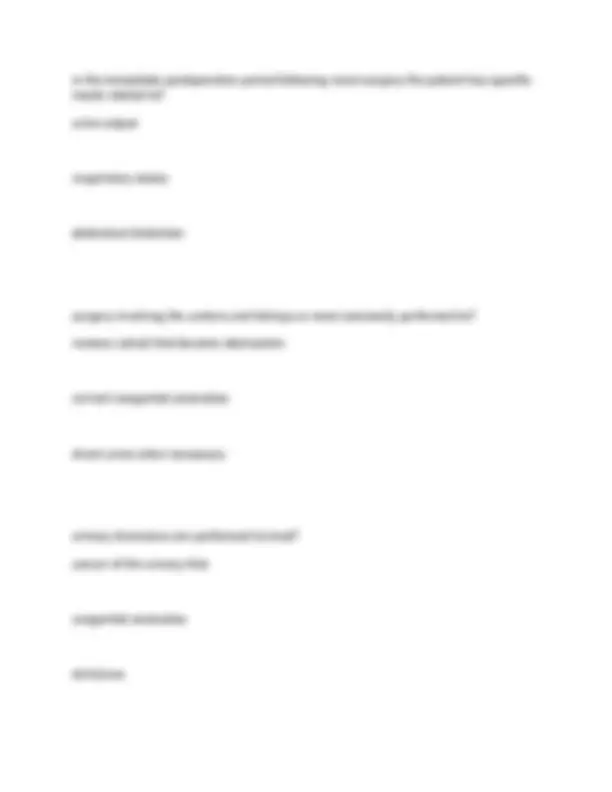
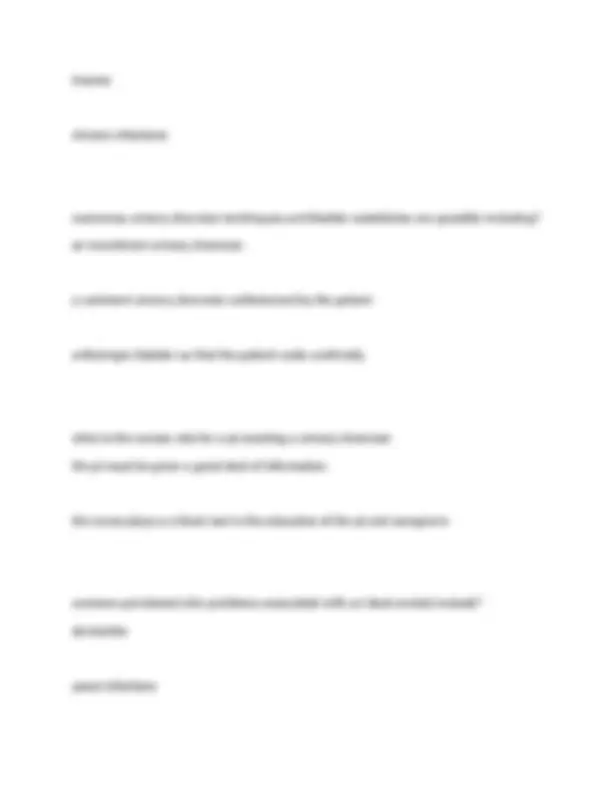

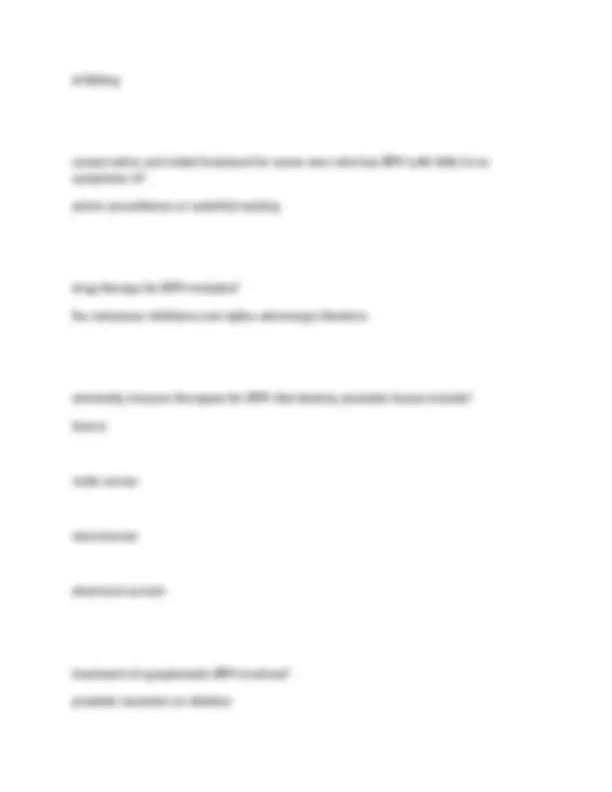
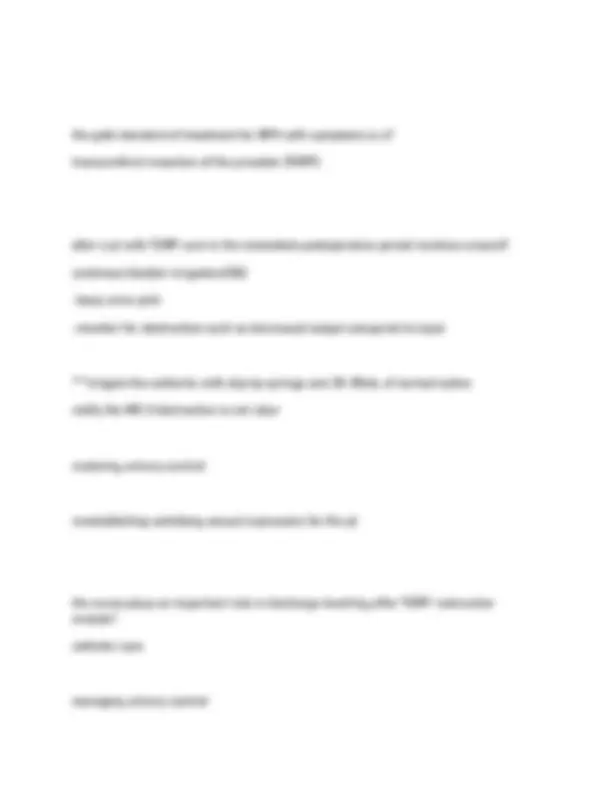
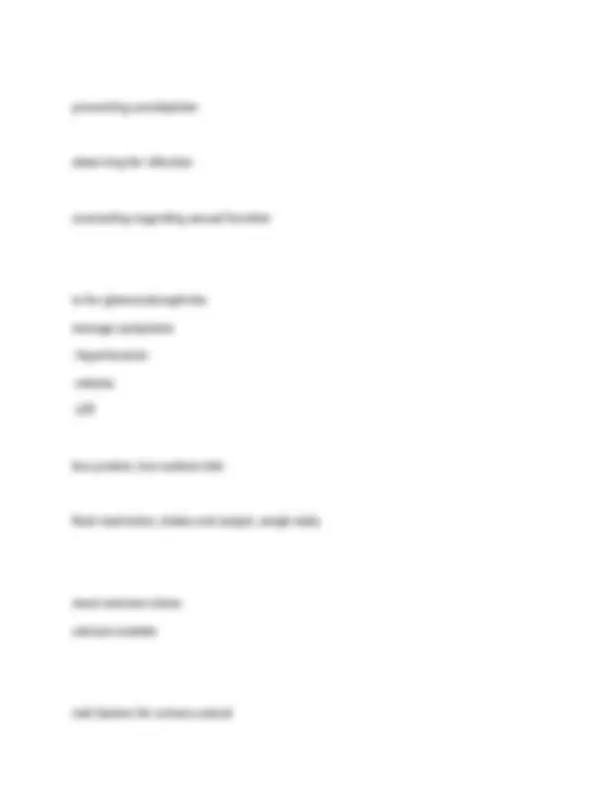

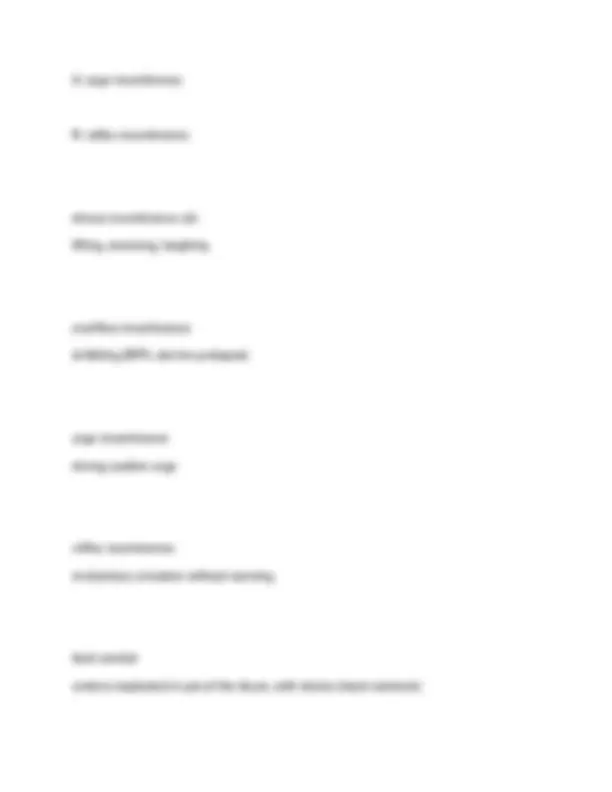
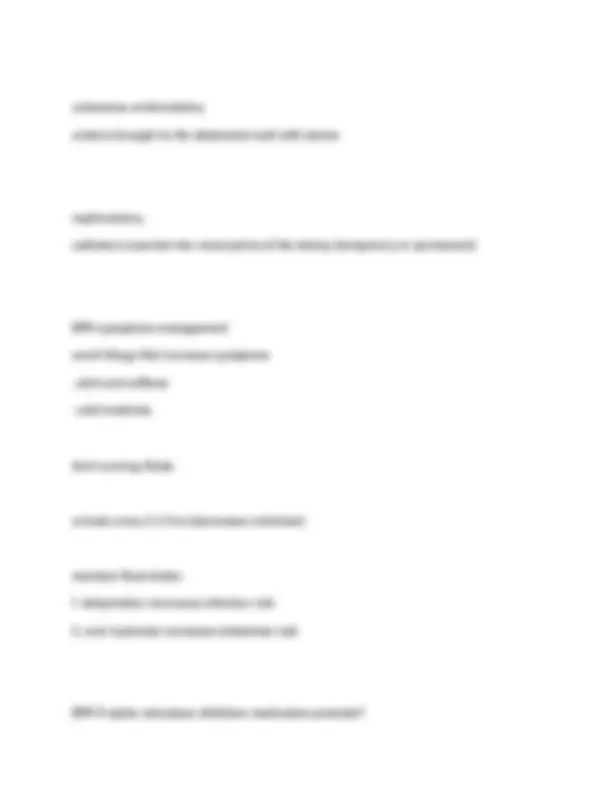
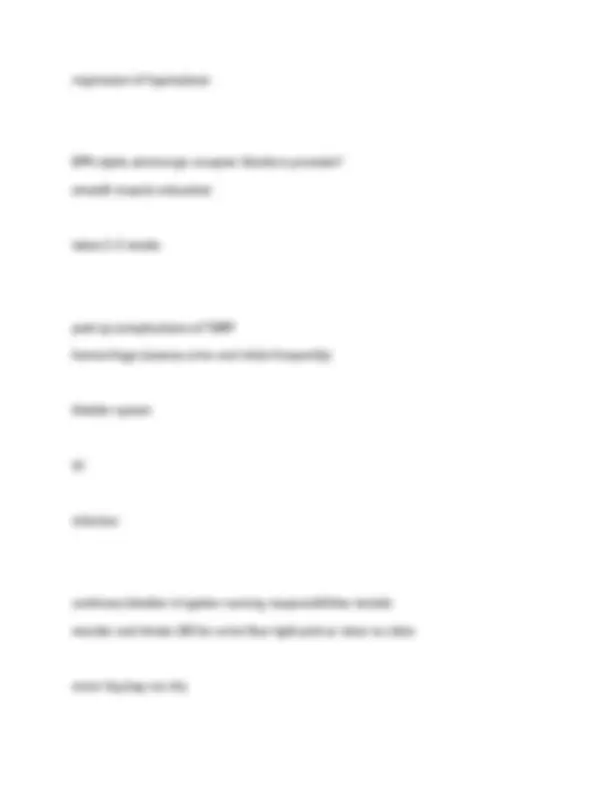
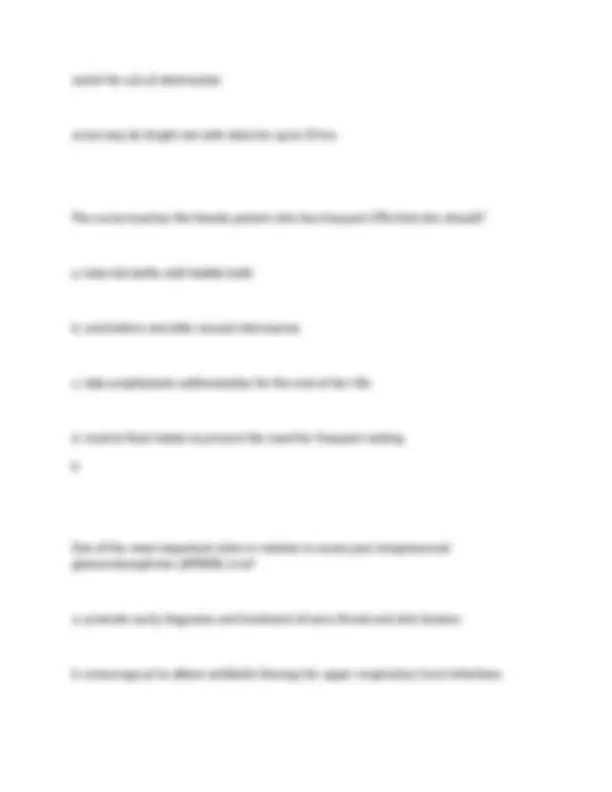
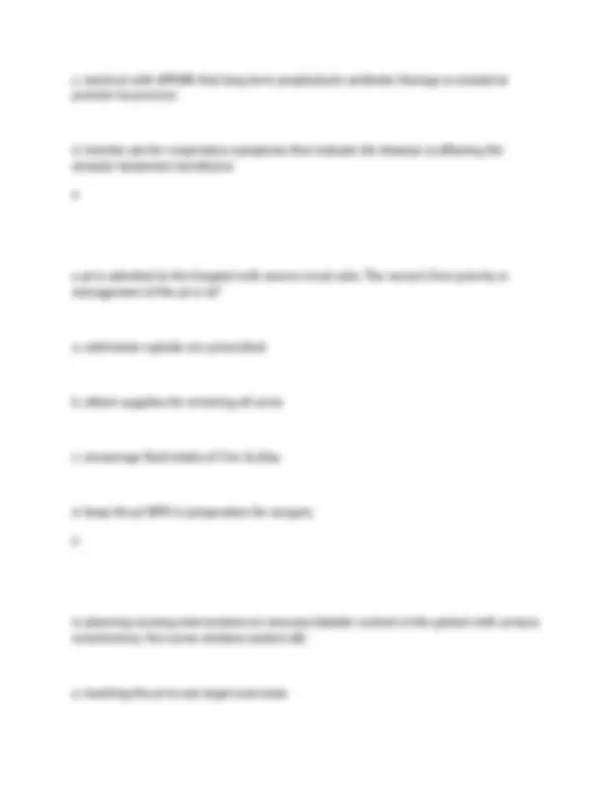
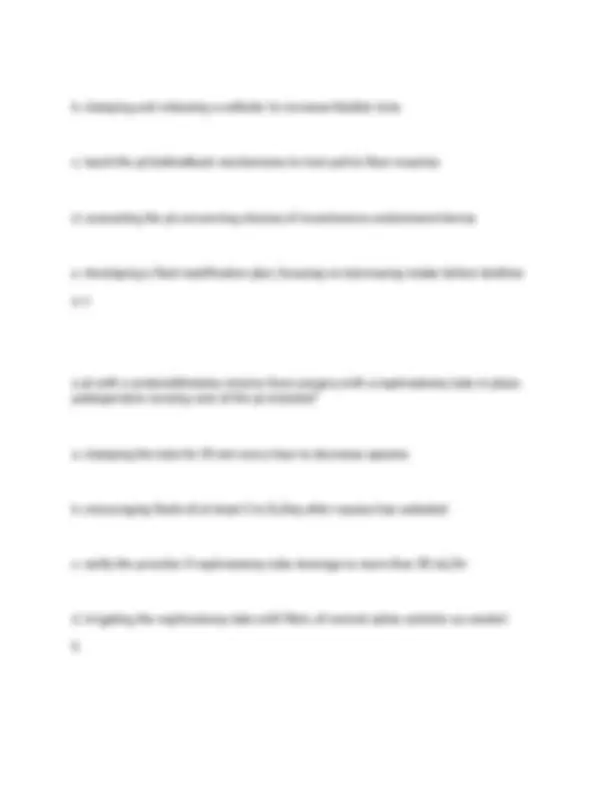
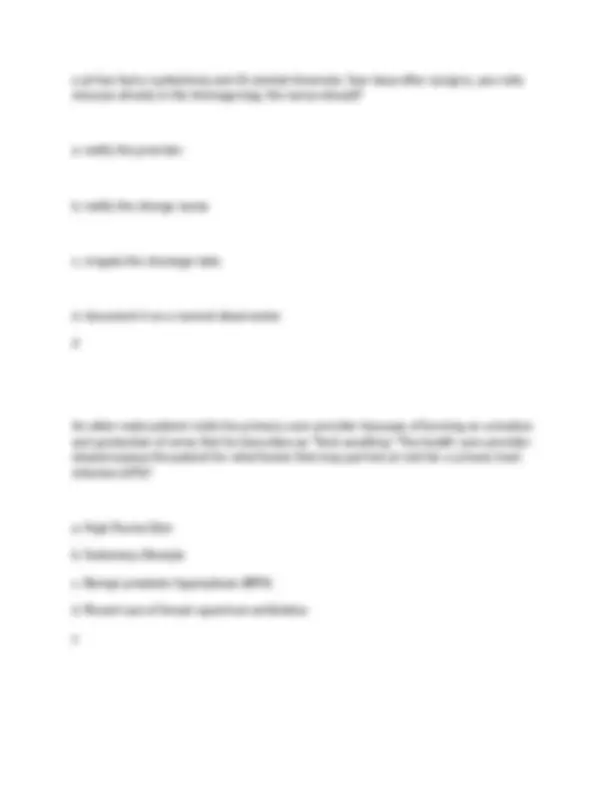
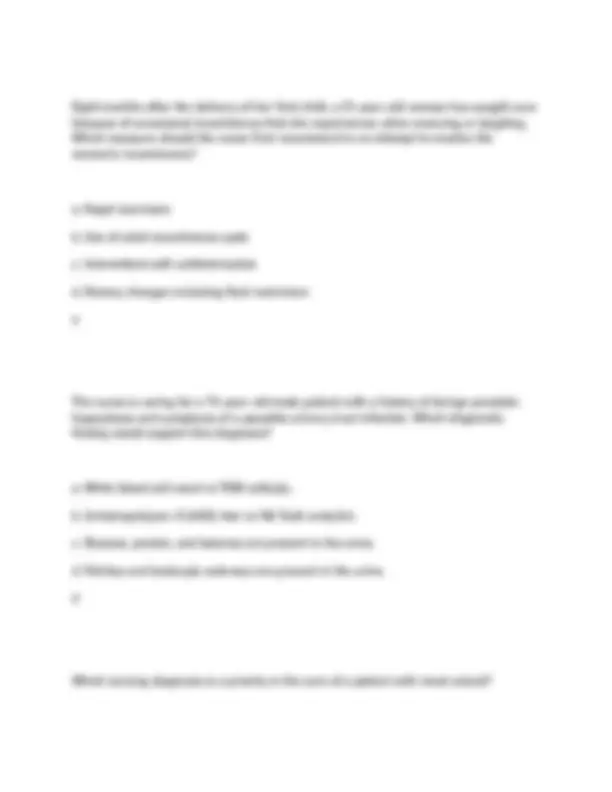
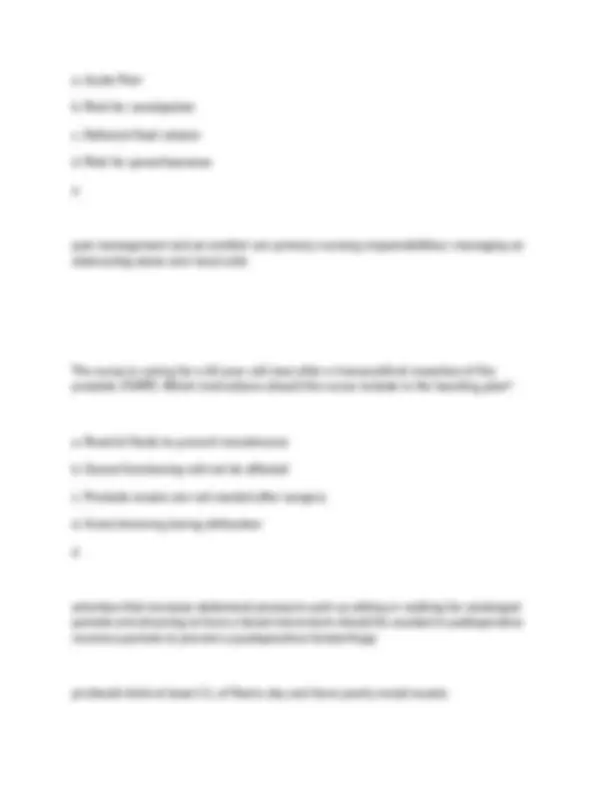
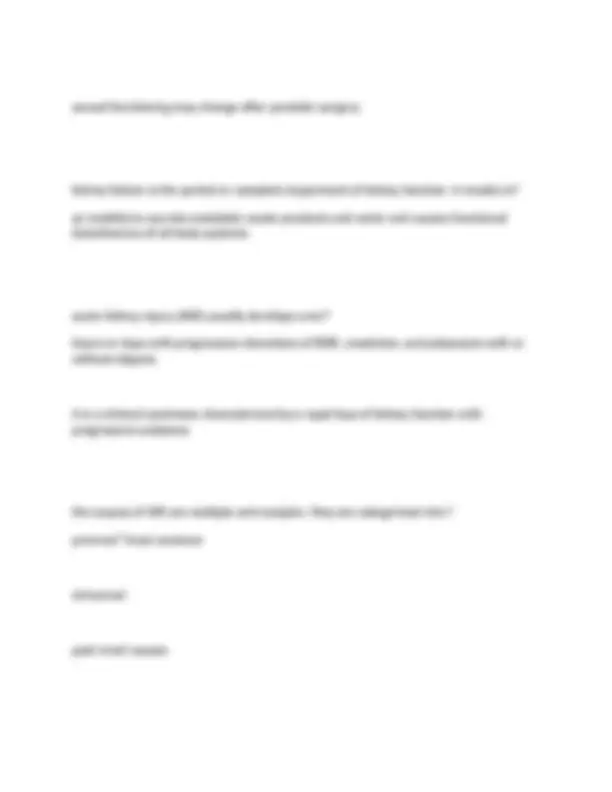
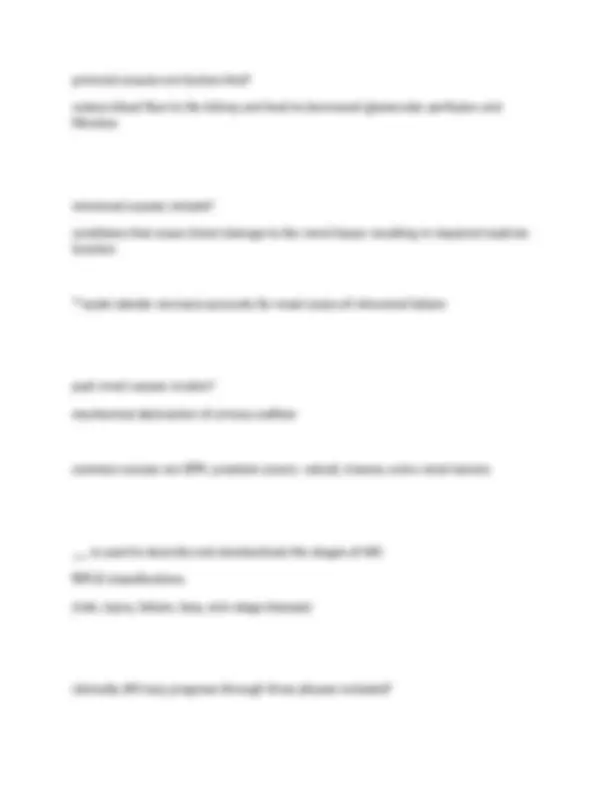
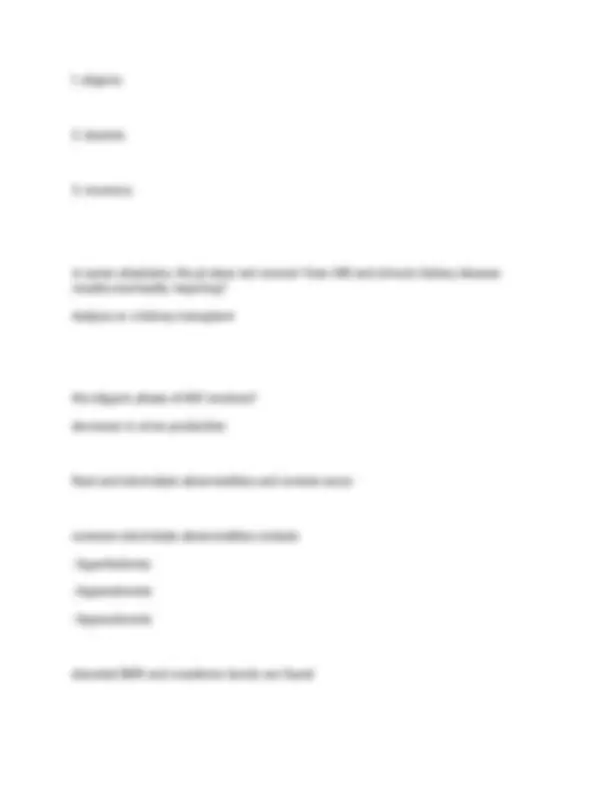
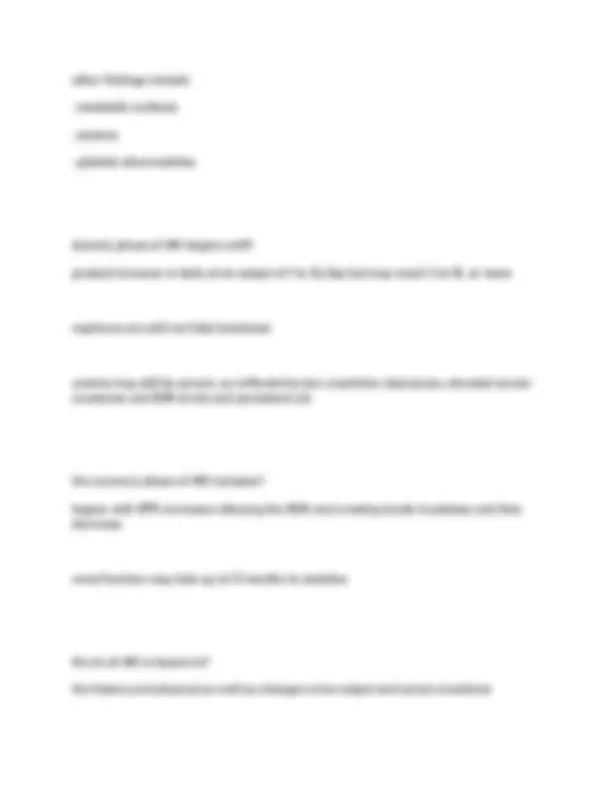
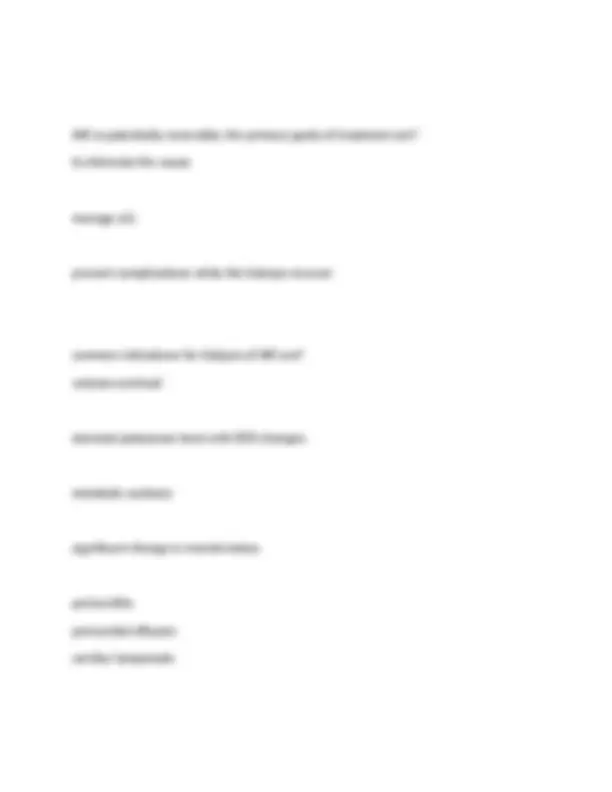
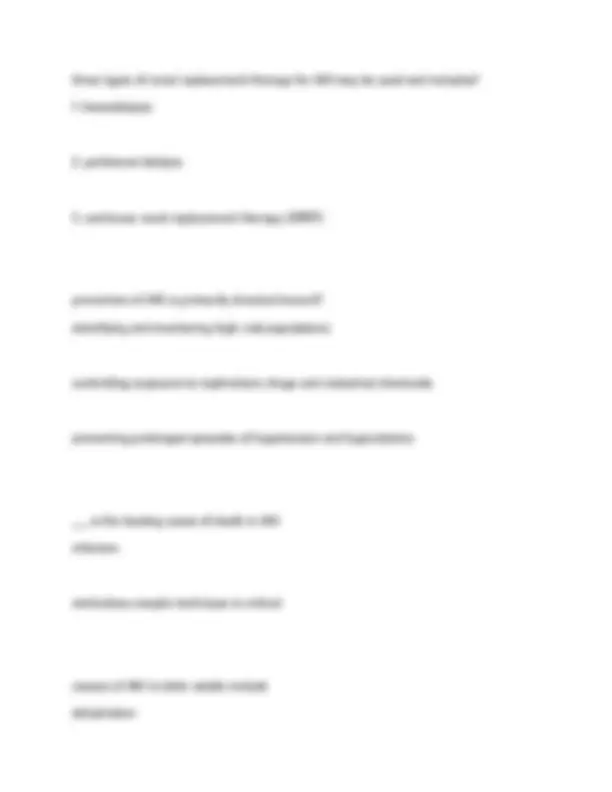
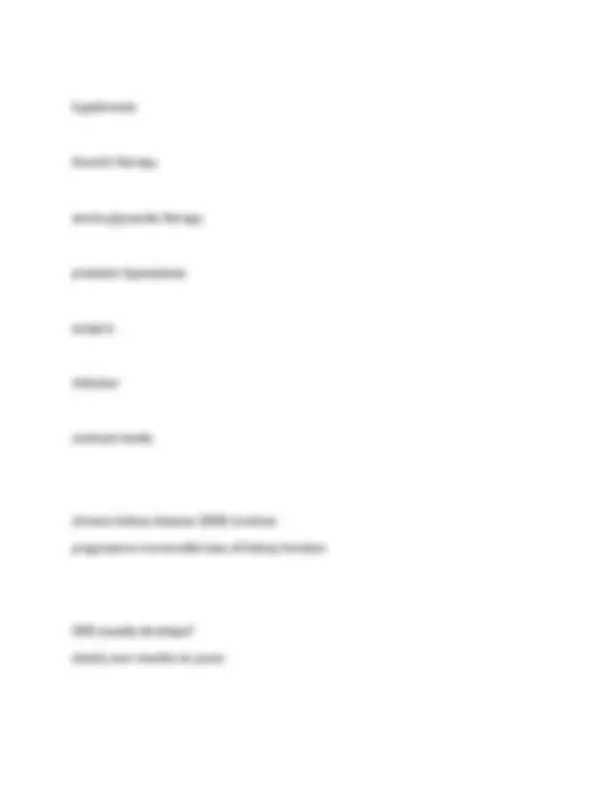
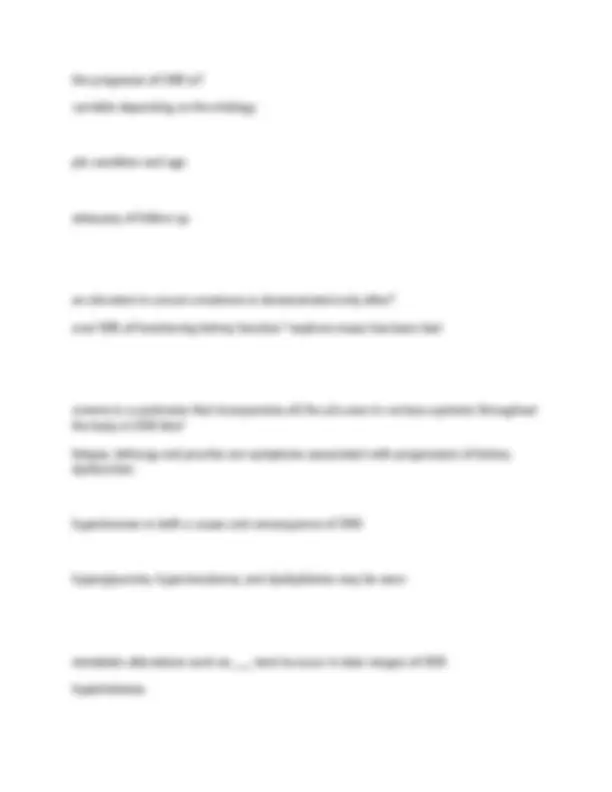
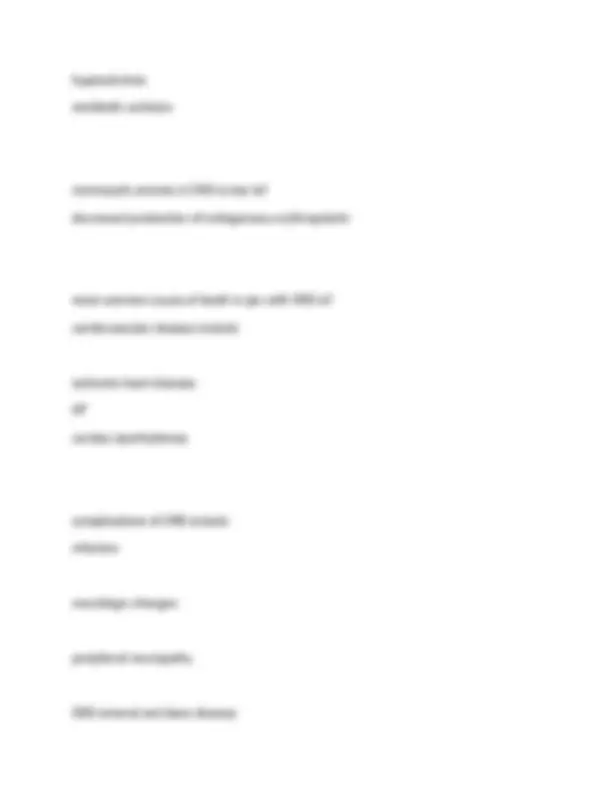
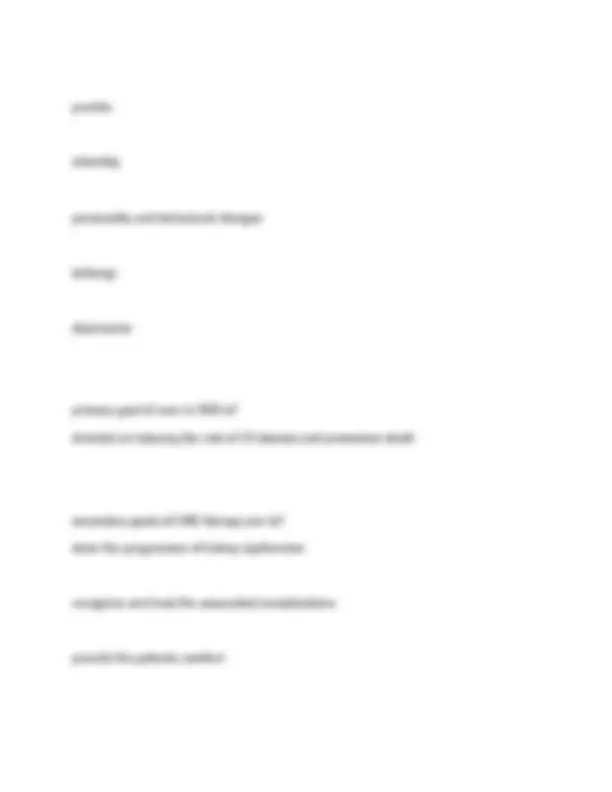
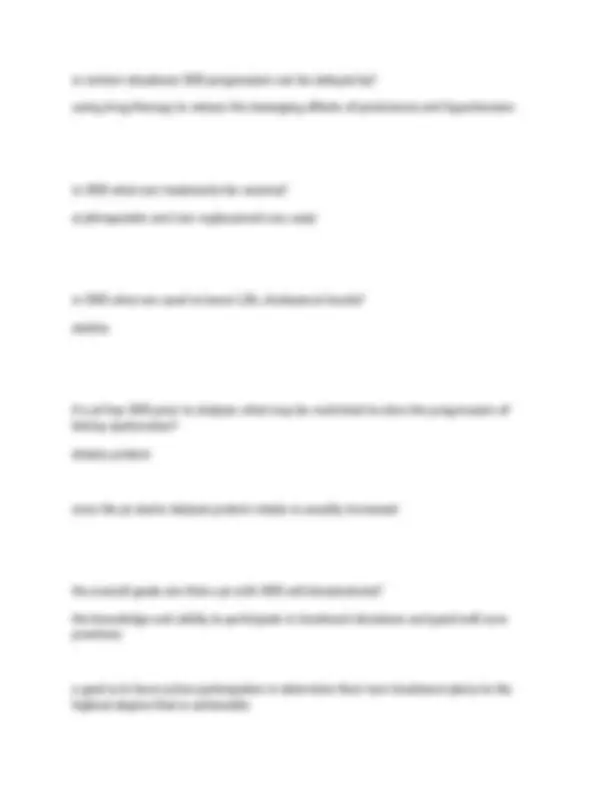
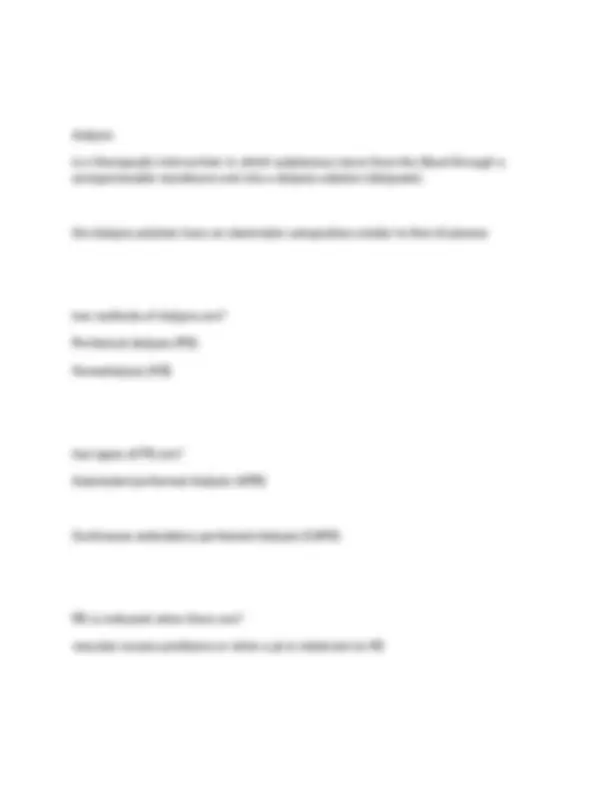
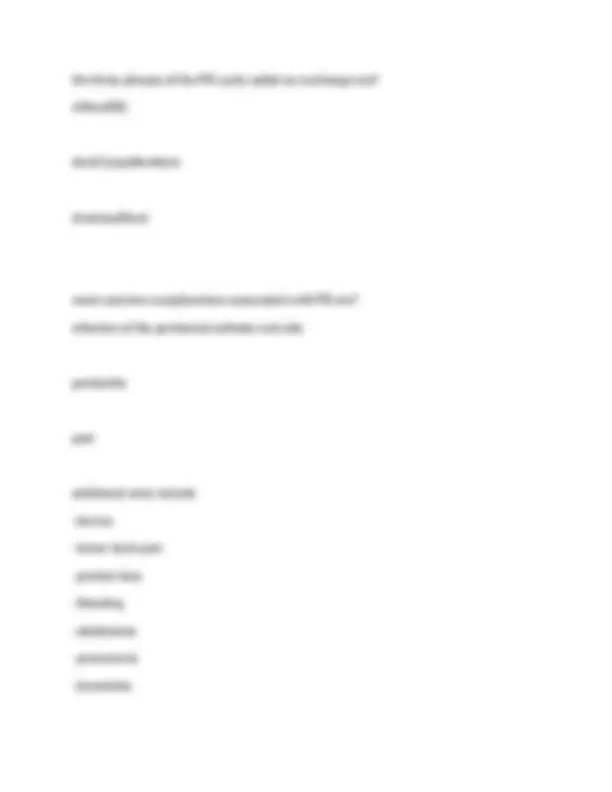
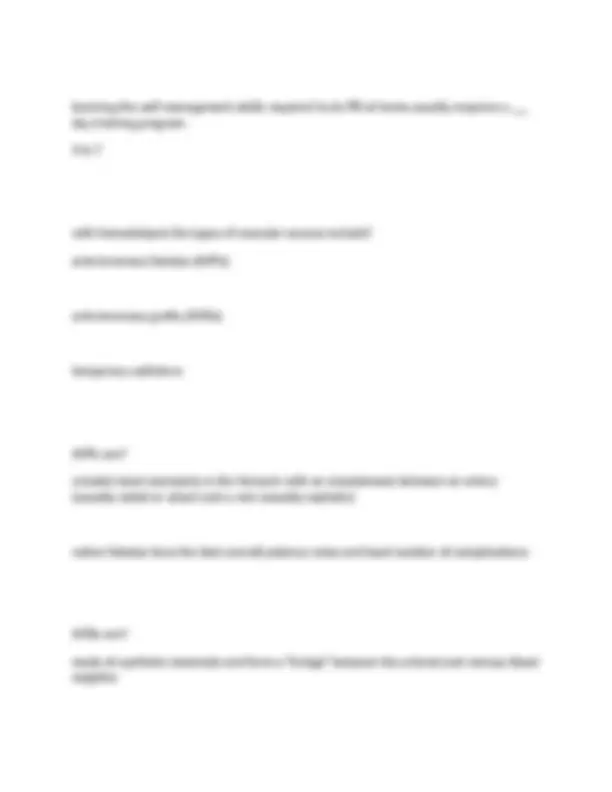
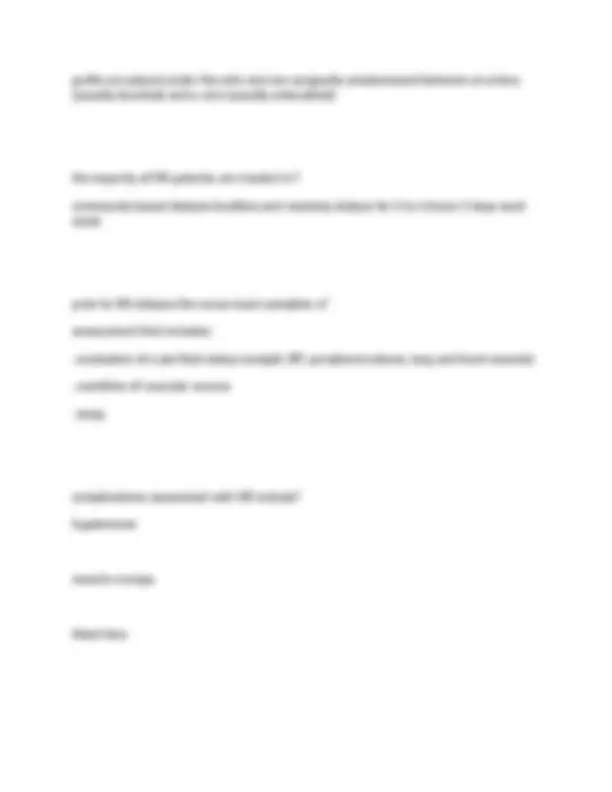
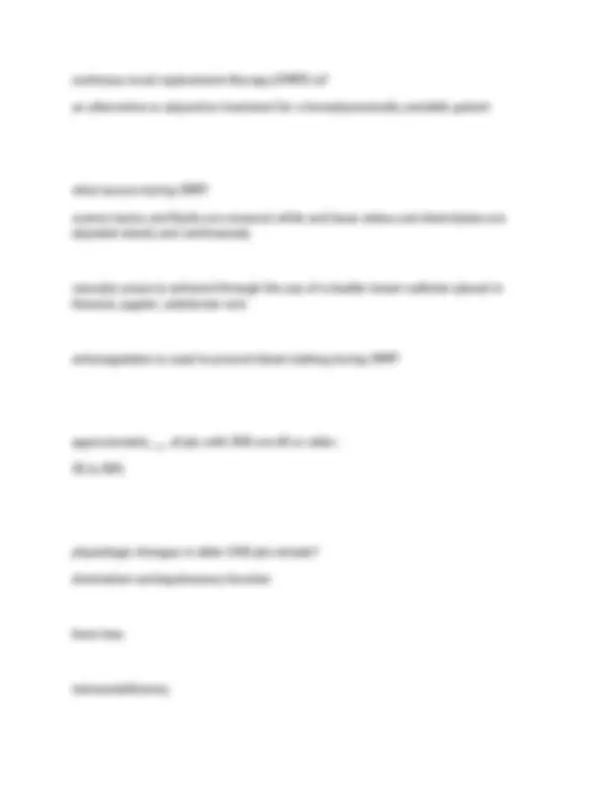
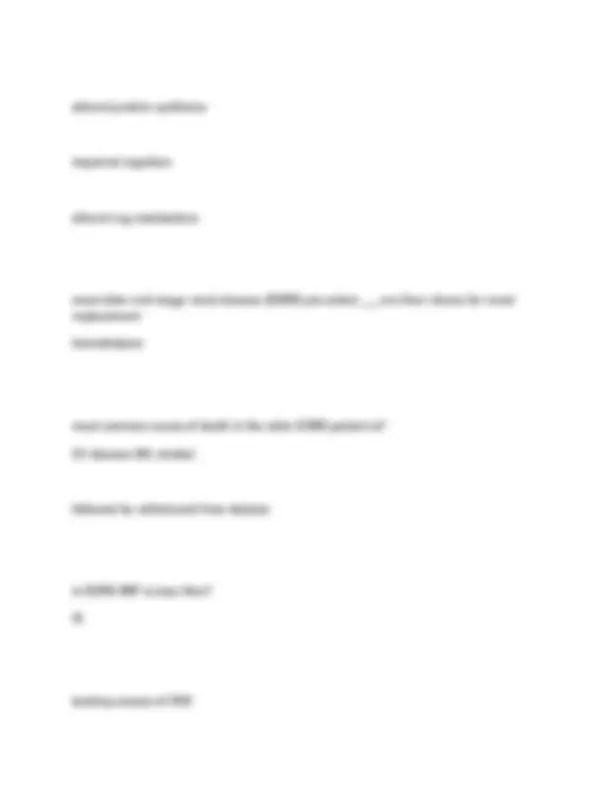
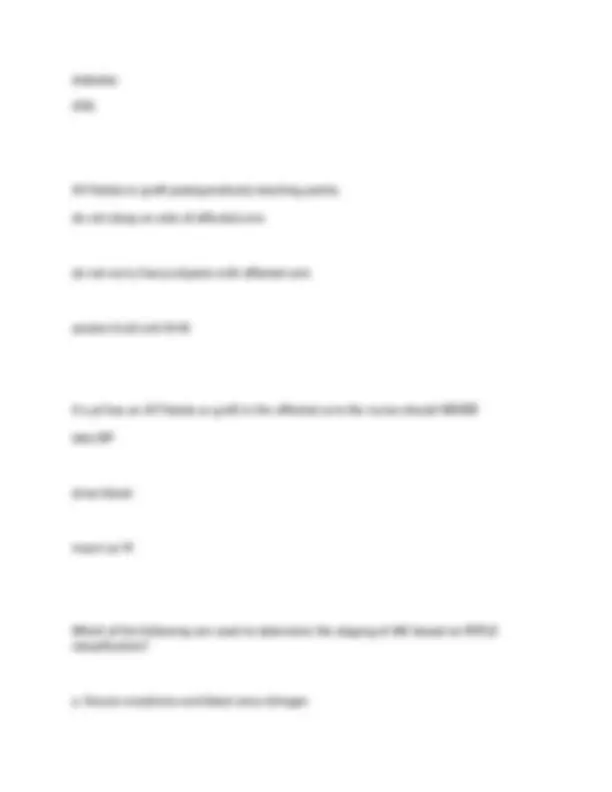
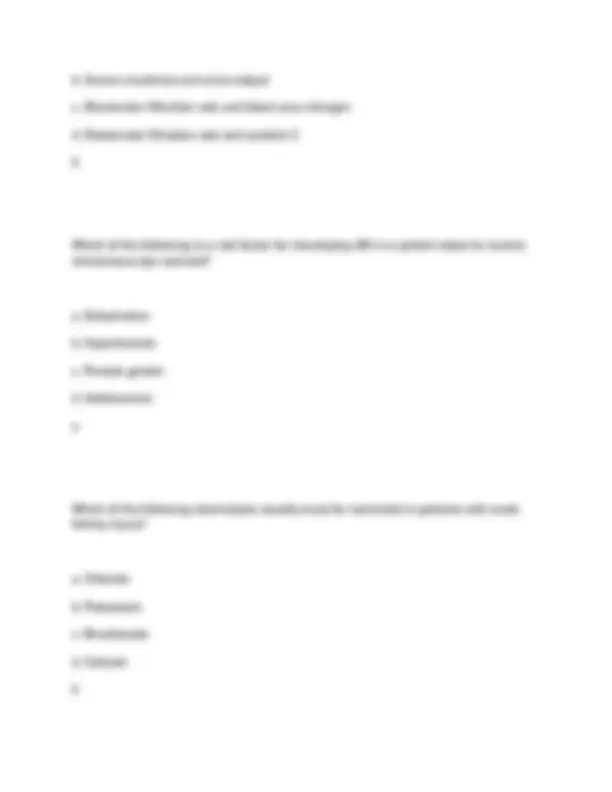
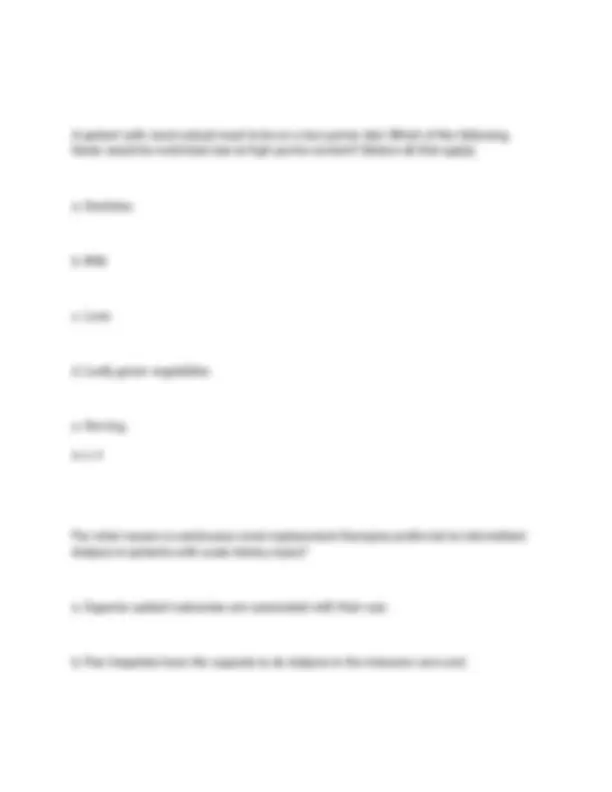
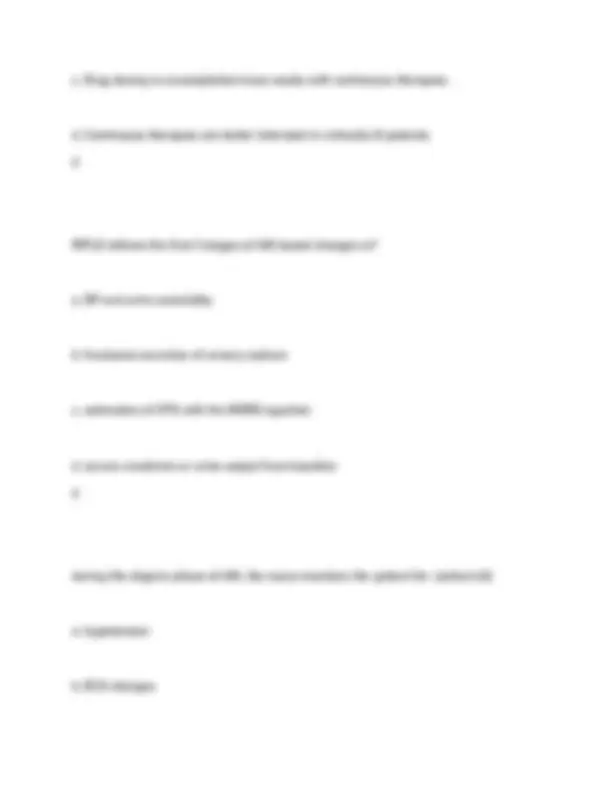
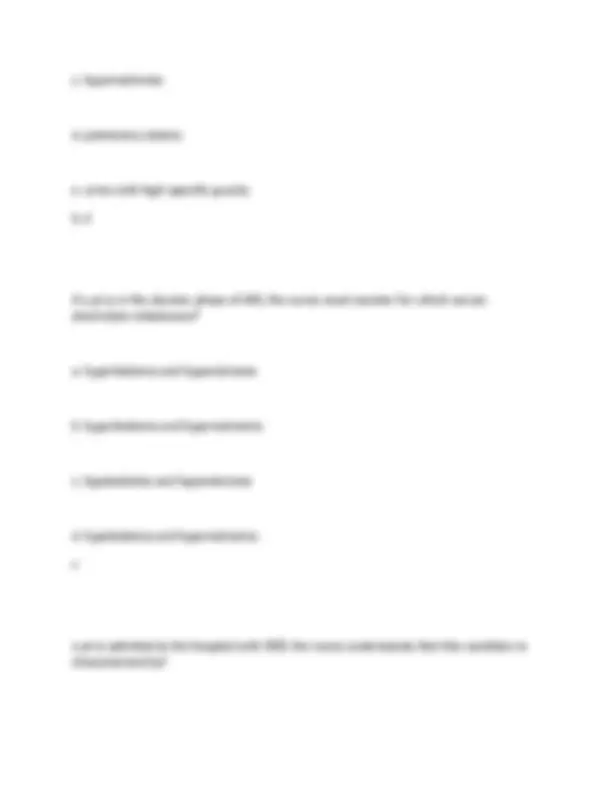
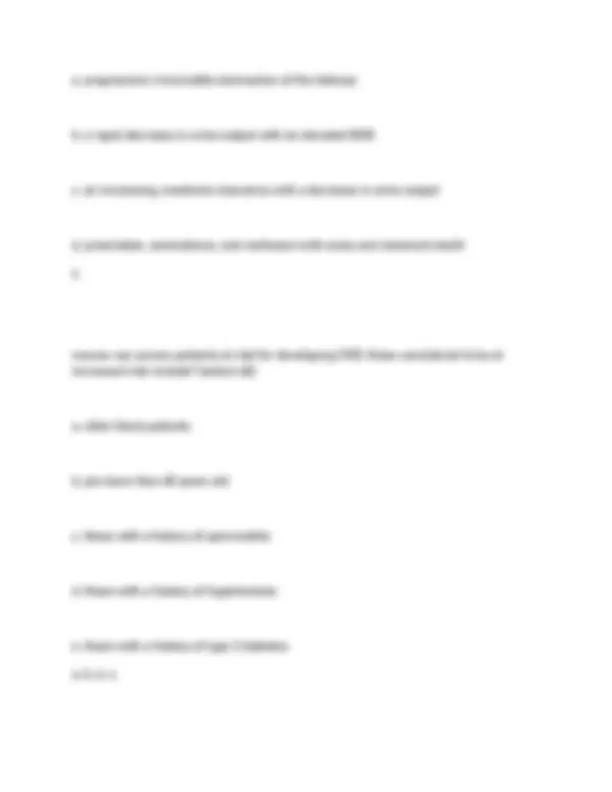
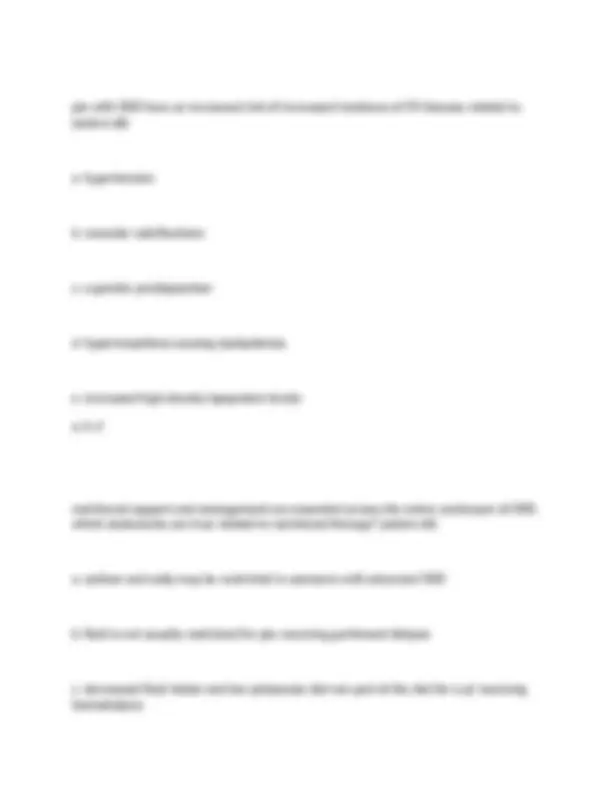
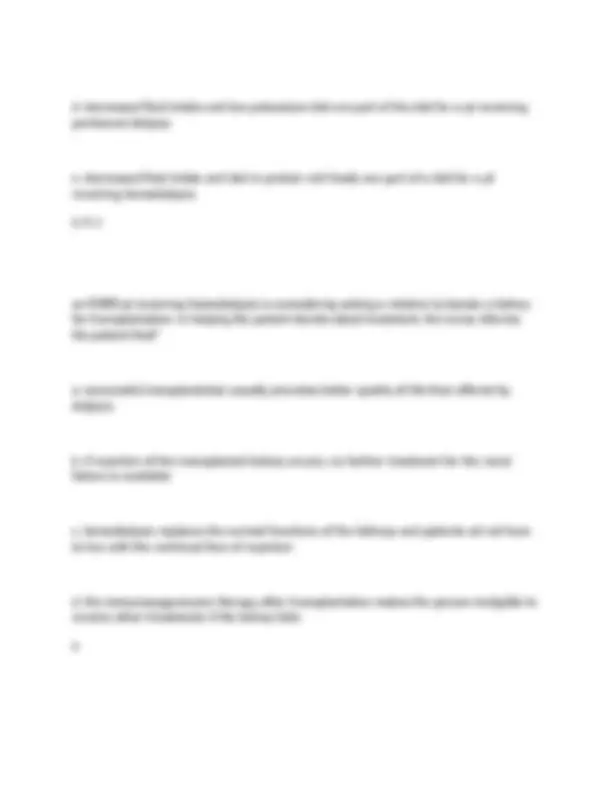
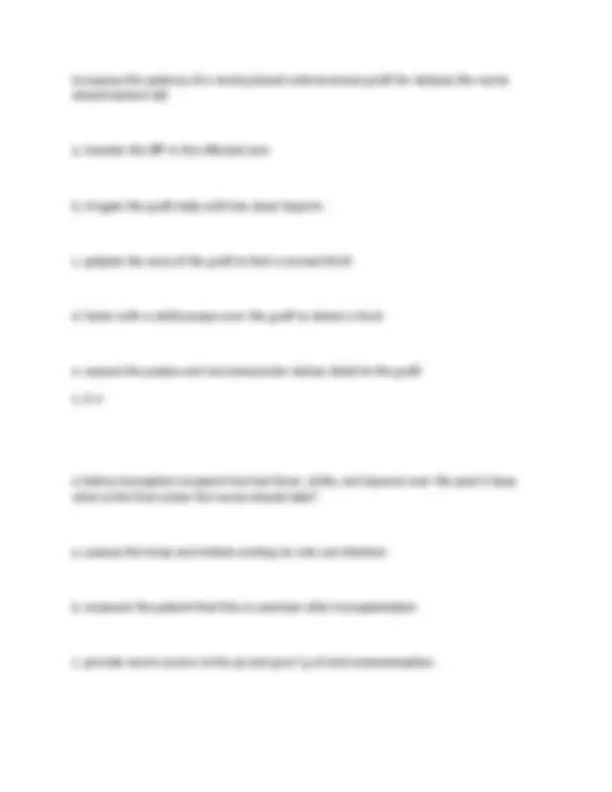
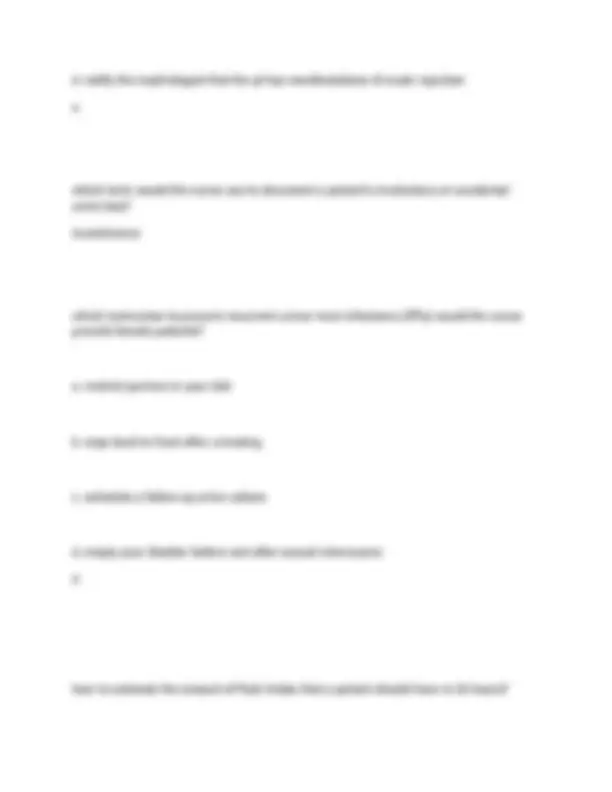
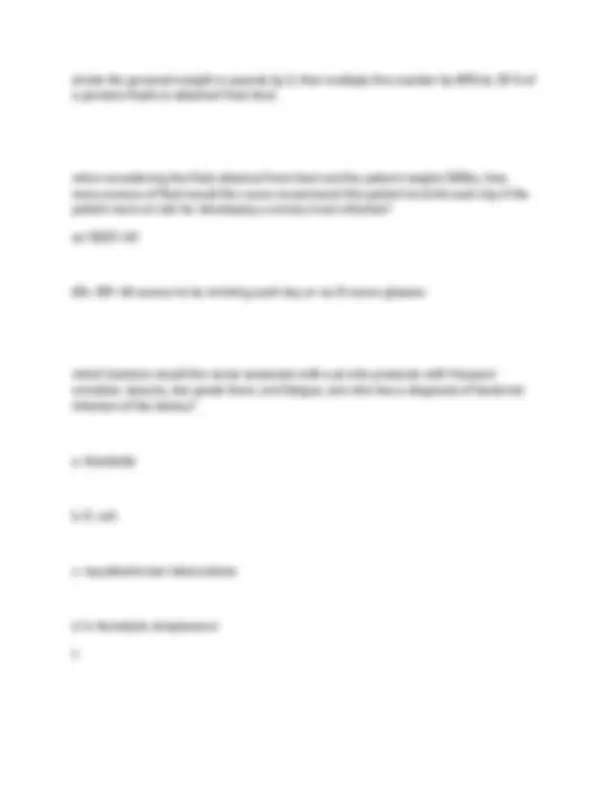
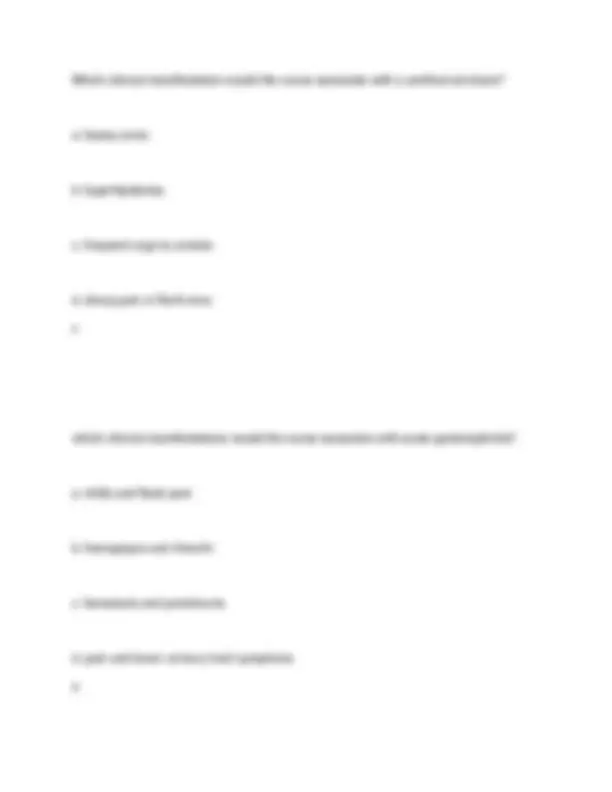
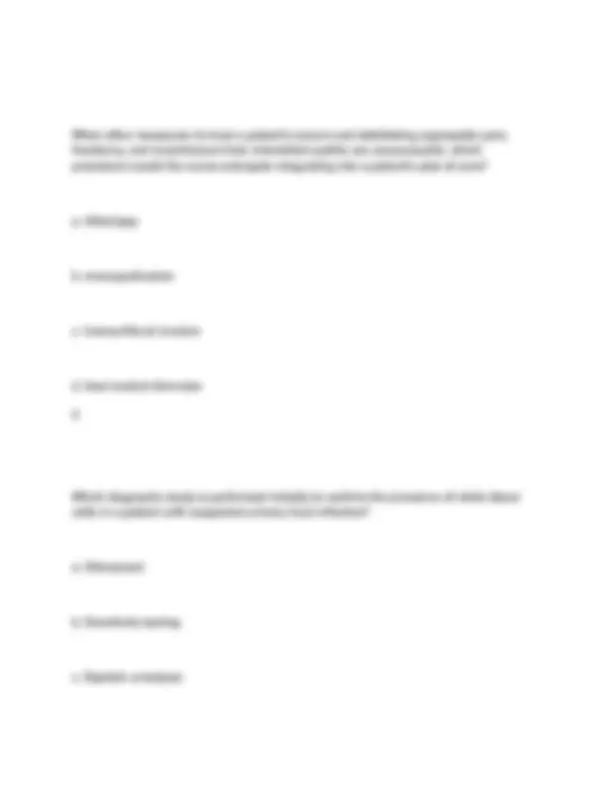
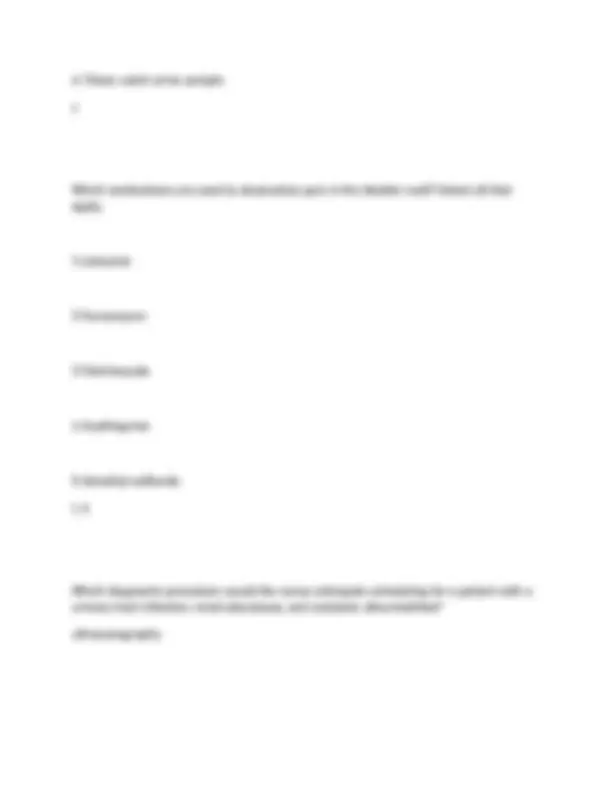
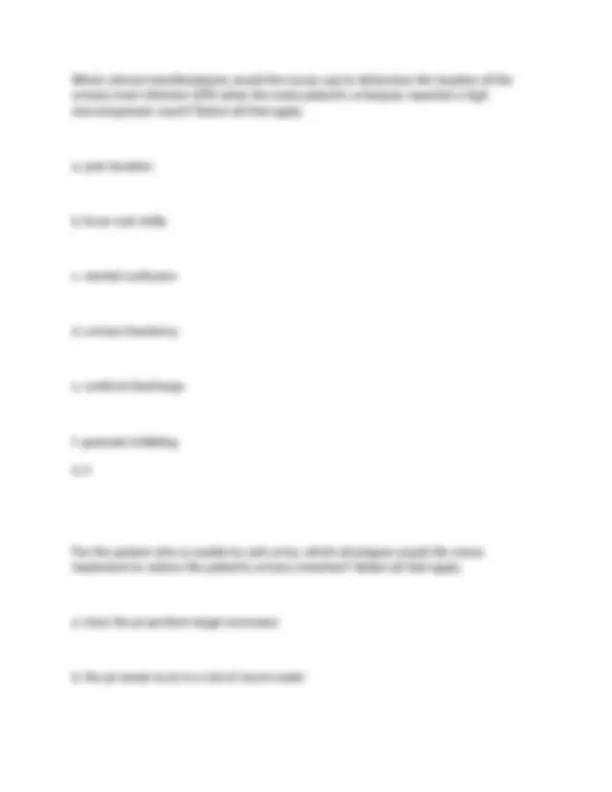
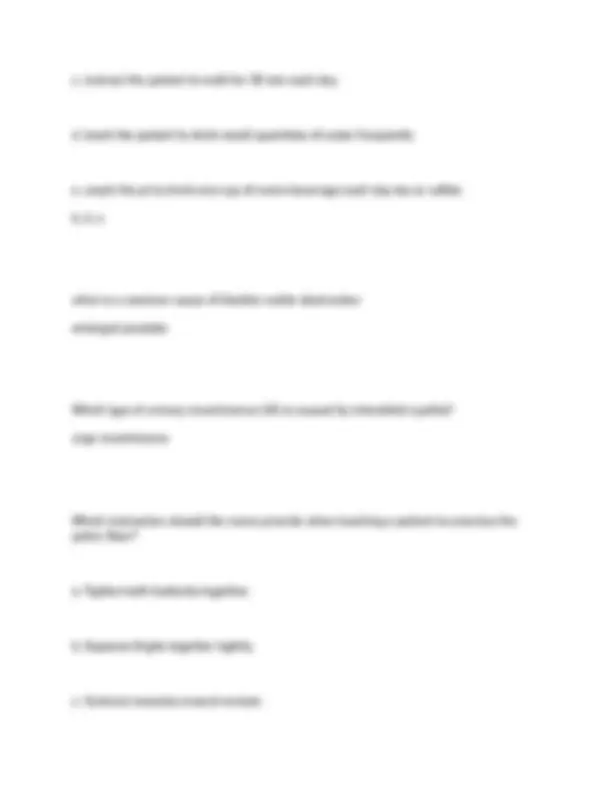
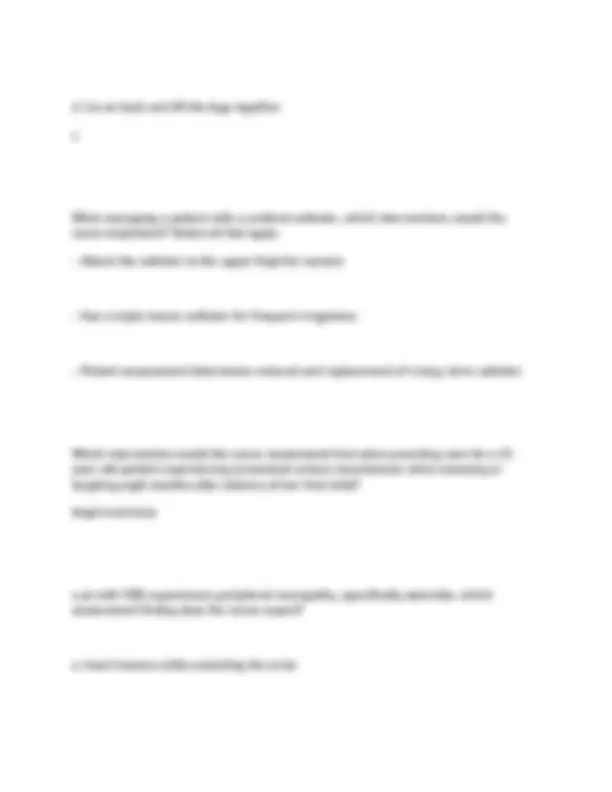
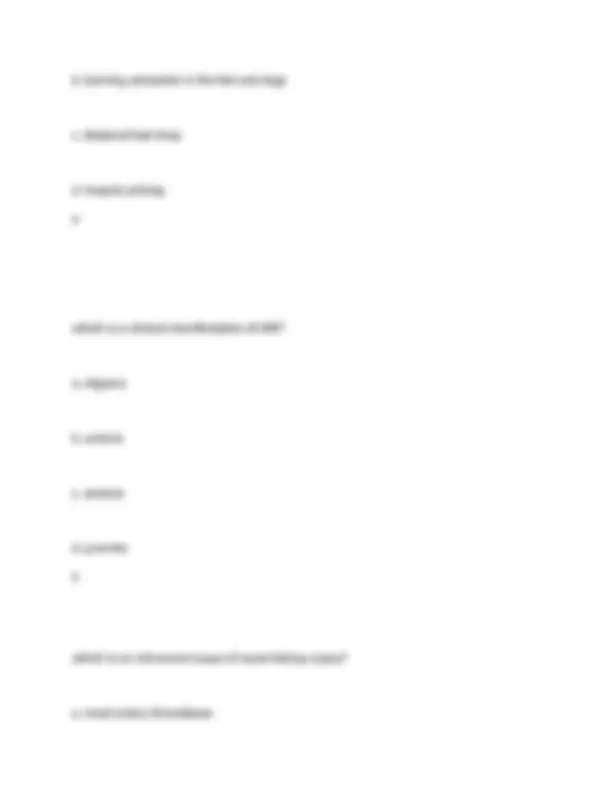
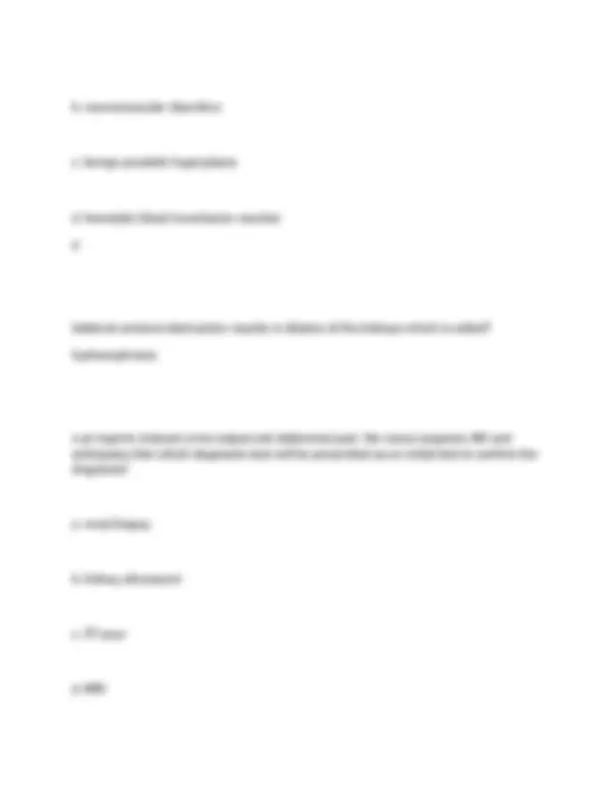
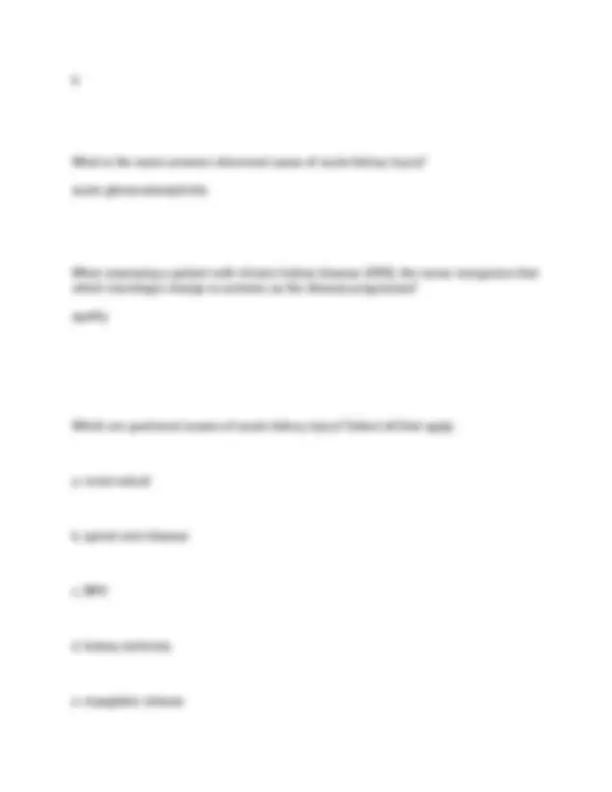
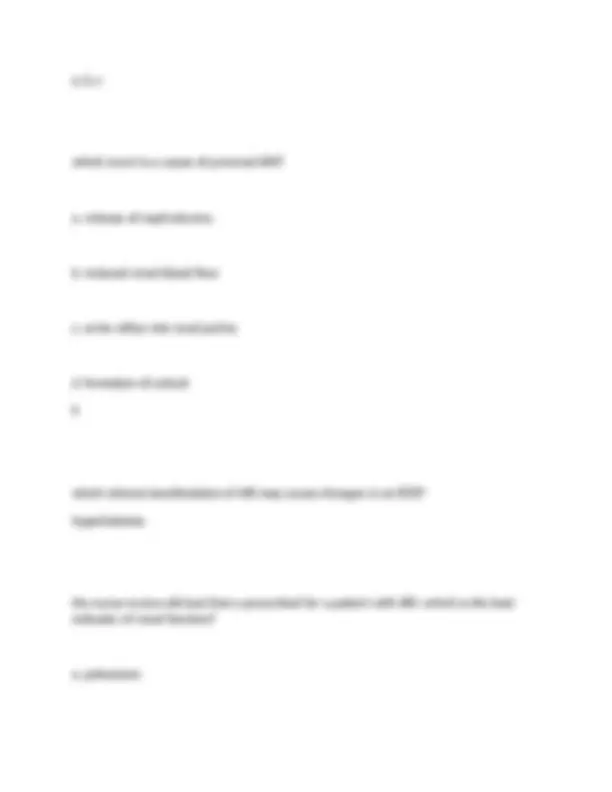
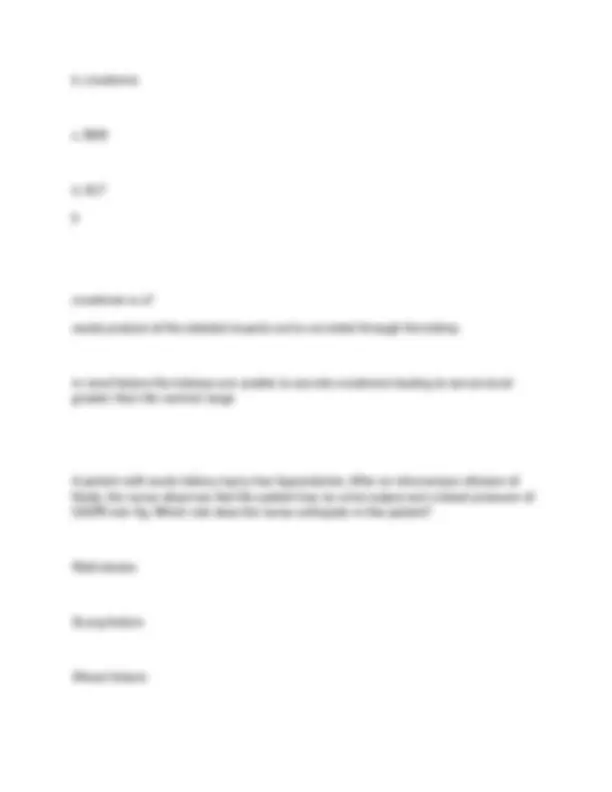
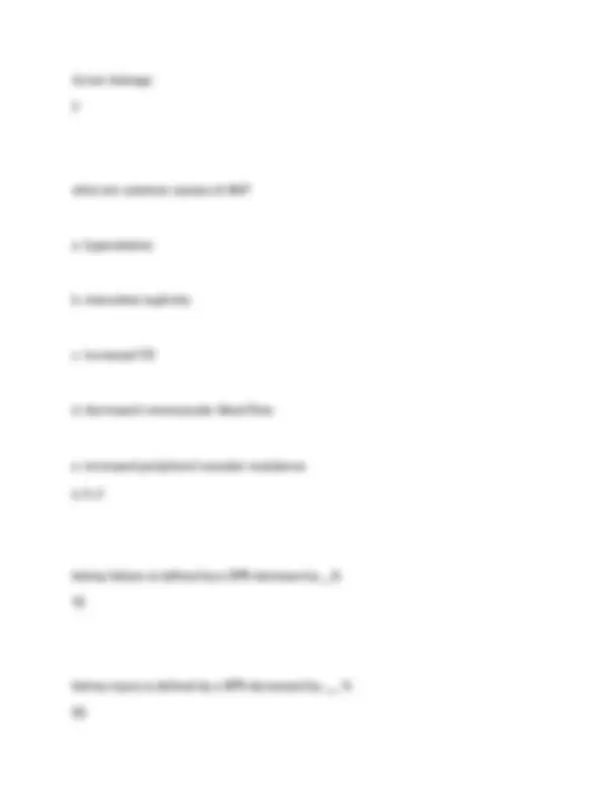
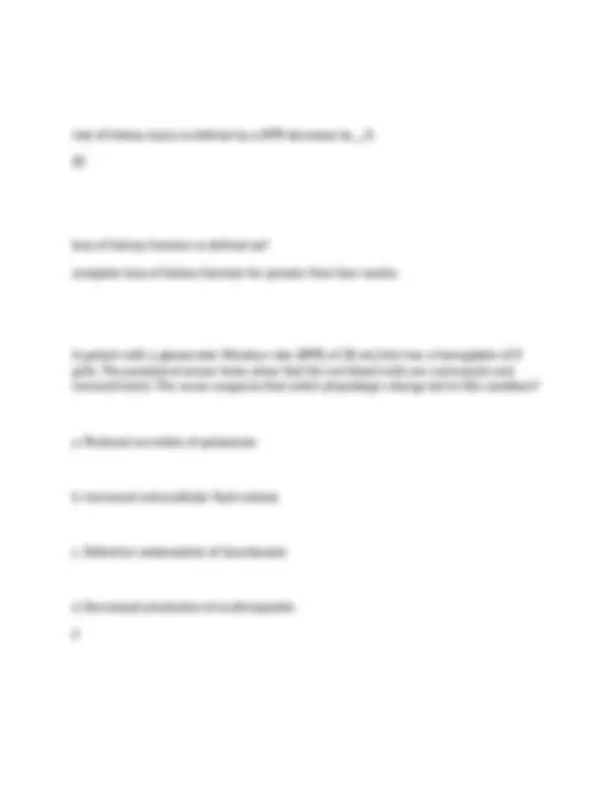
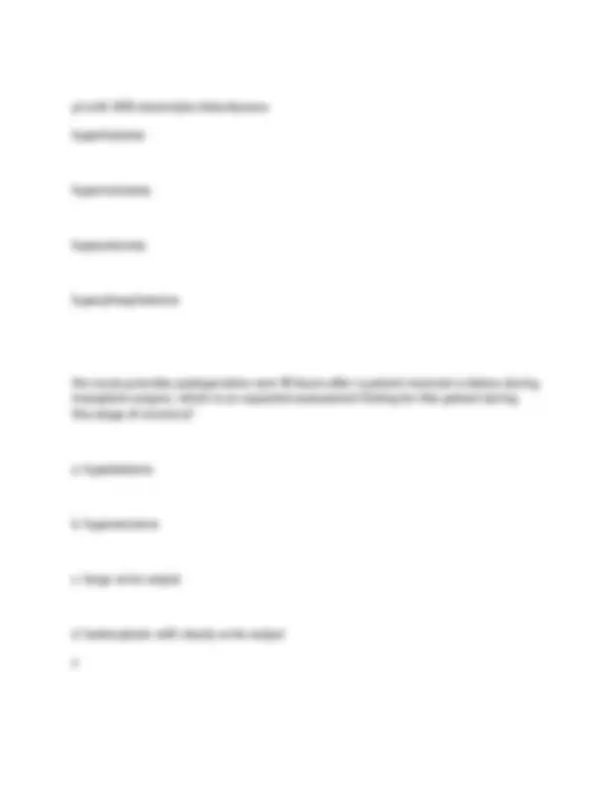
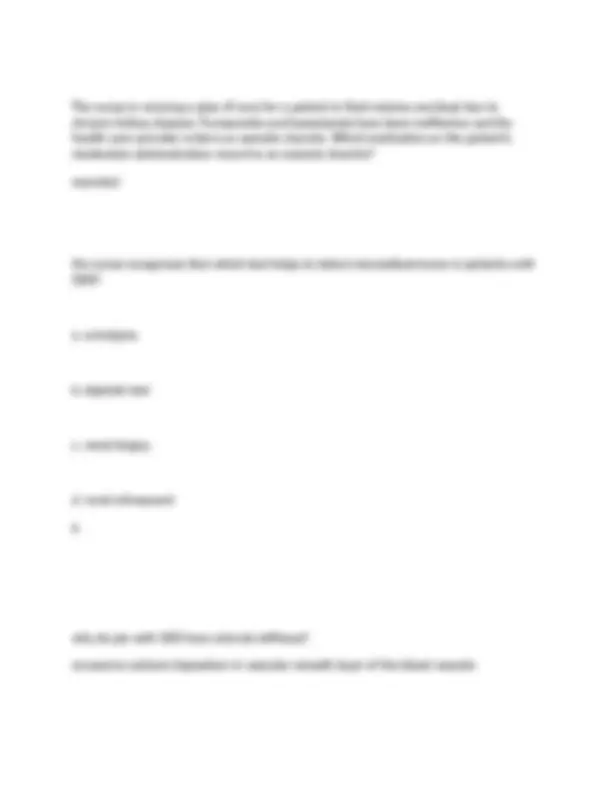
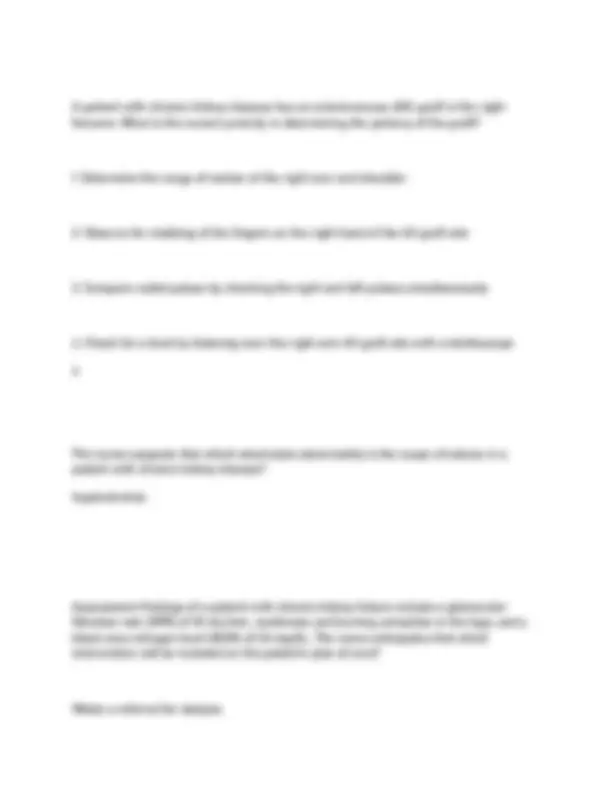
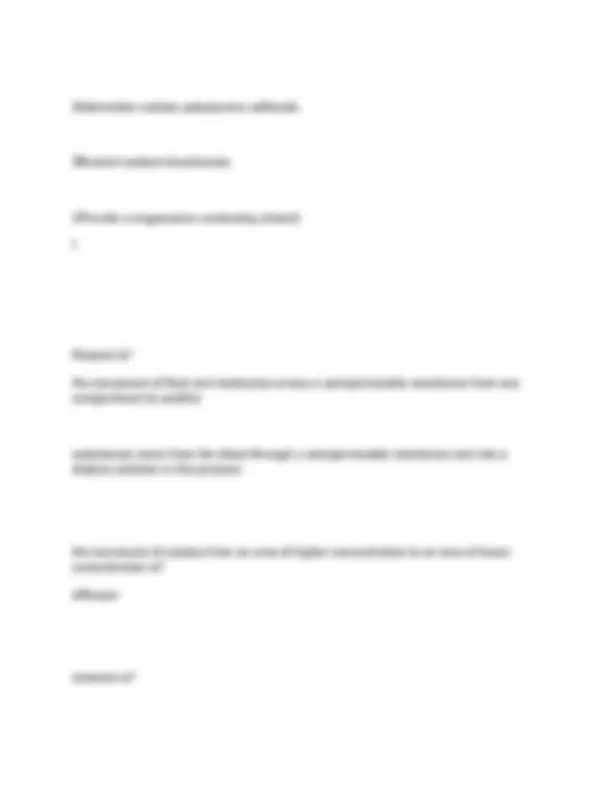
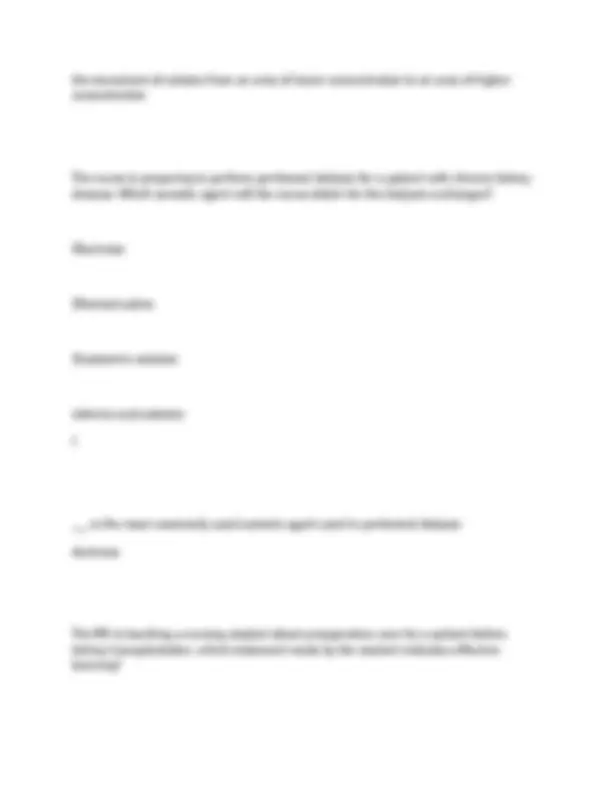
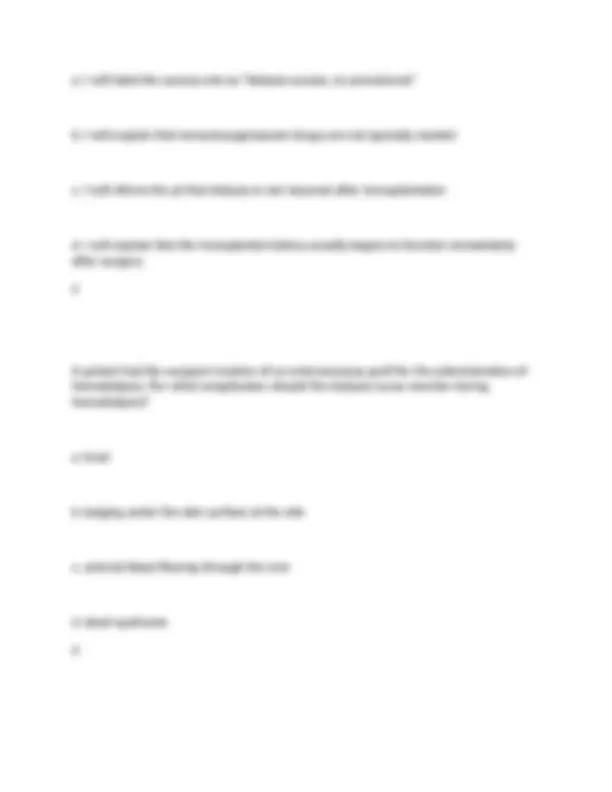
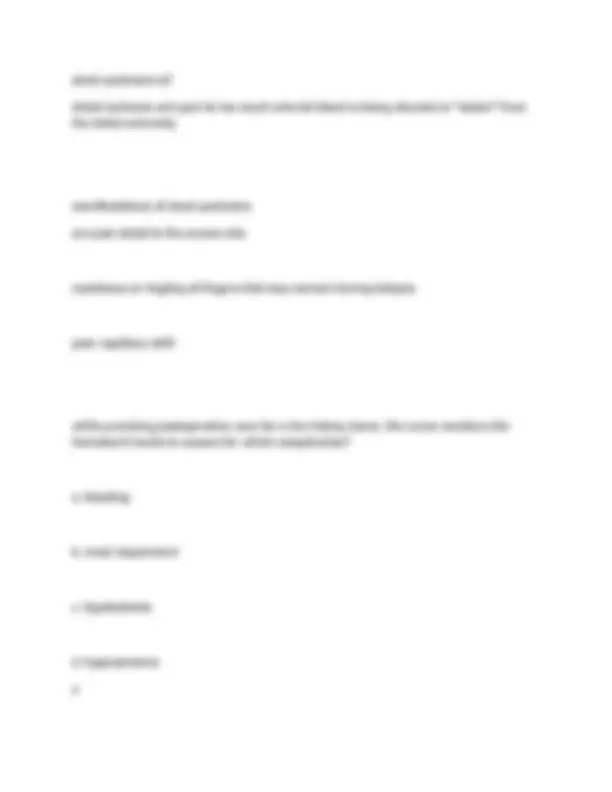
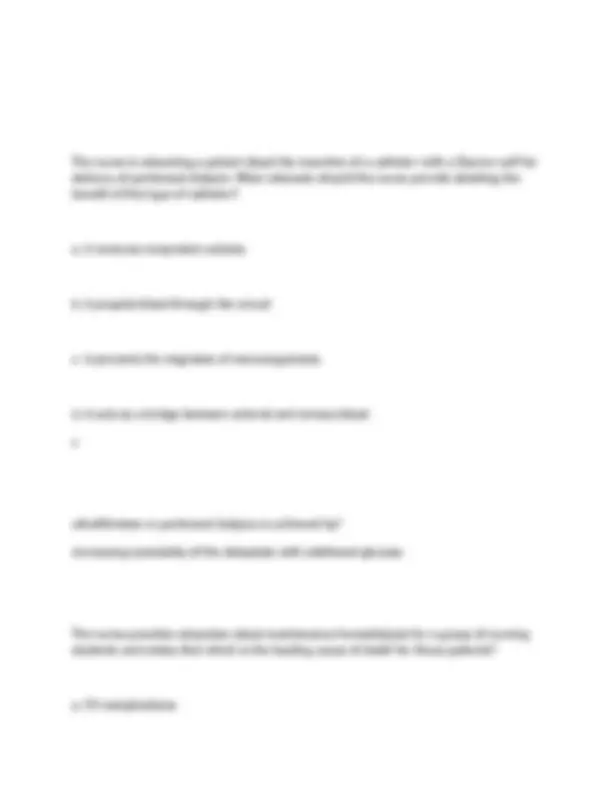
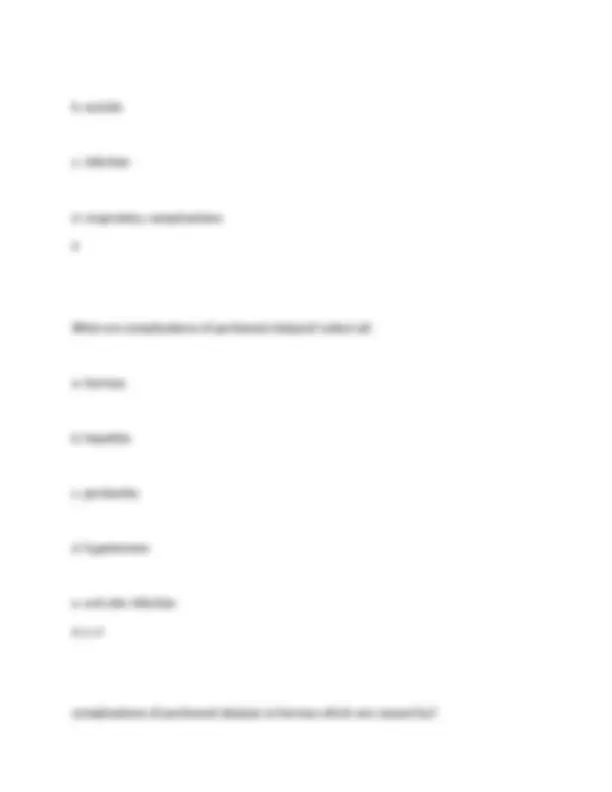
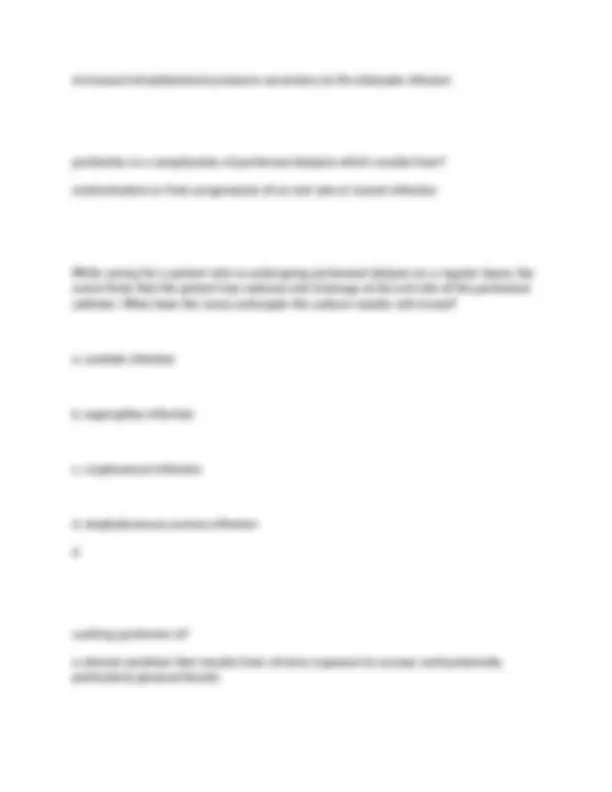
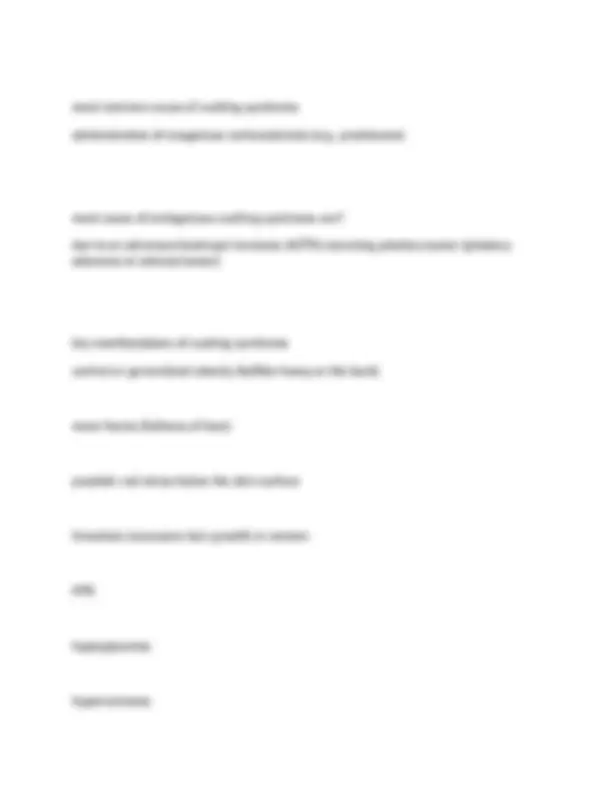
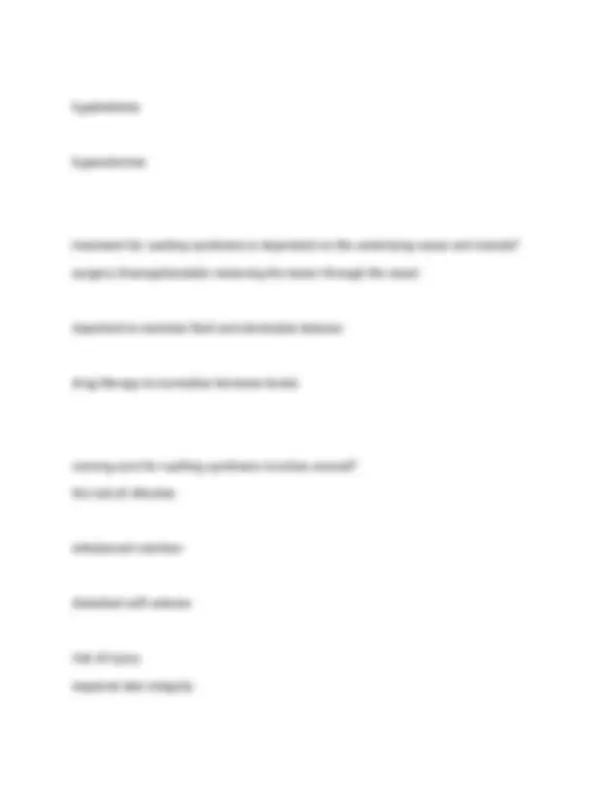
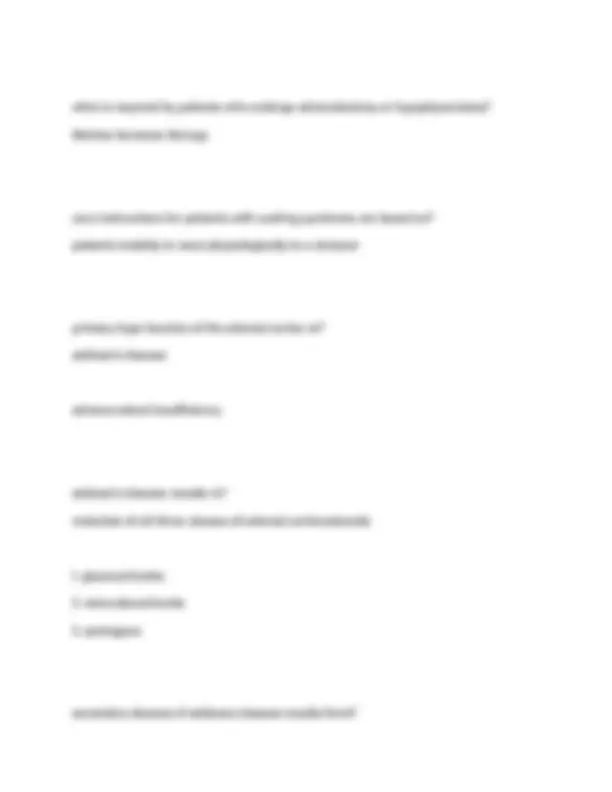
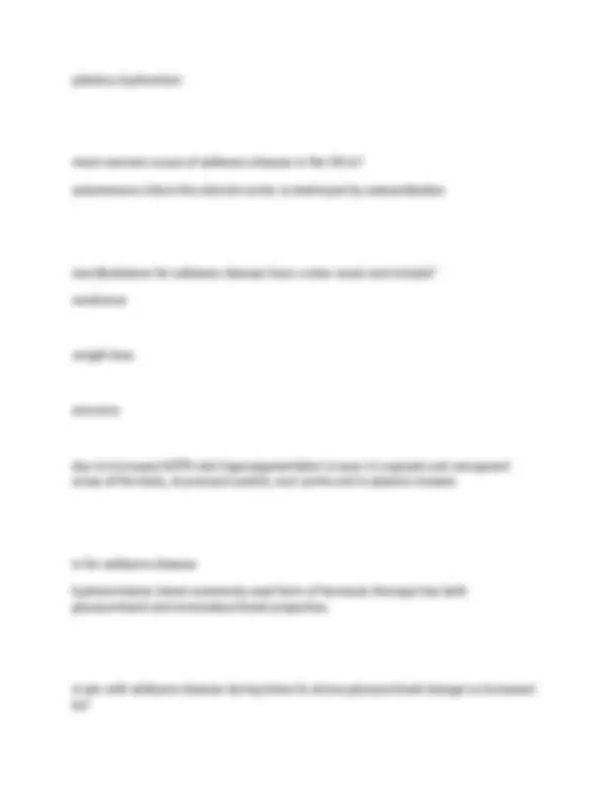
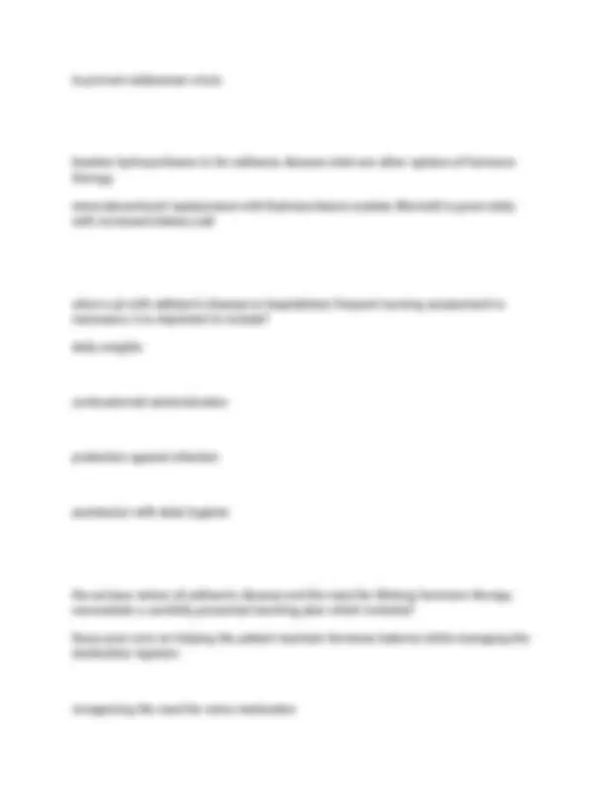
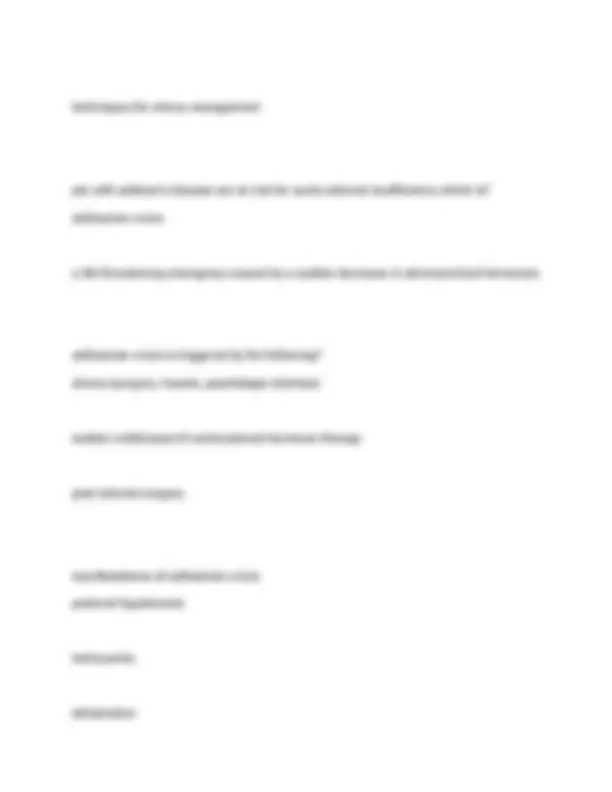
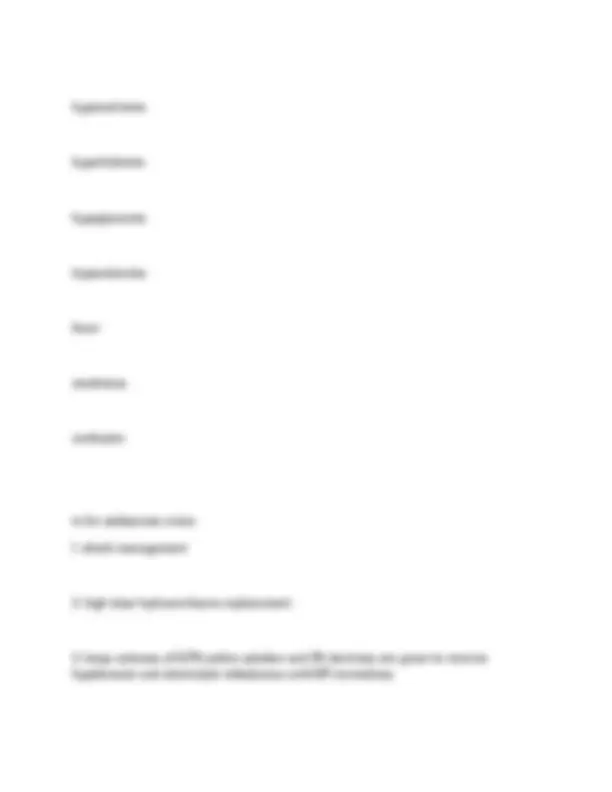


Study with the several resources on Docsity

Earn points by helping other students or get them with a premium plan


Prepare for your exams
Study with the several resources on Docsity

Earn points to download
Earn points by helping other students or get them with a premium plan
Community
Ask the community for help and clear up your study doubts
Discover the best universities in your country according to Docsity users
Free resources
Download our free guides on studying techniques, anxiety management strategies, and thesis advice from Docsity tutors
NURS 6202 Exam 1 2025/2026 Questions with Correct and Detailed Answers Actual Exam (Score A)-Marquette University
Typology: Exams
1 / 253

This page cannot be seen from the preview
Don't miss anything!





























































































___ are the second most common bacterial disease and most common bacterial infection in women UTIs How do you define complementary and alternative therapies? group of diverse medical and health care systems, practice, and products that are generally not considered part of conventional medicine what is the most important in prevention of pst common form of AKI, prerenal AKI? promptly treat hypovolemia untreated AKI often leads to kidney damage (intrarenal)
What fluid is initially given for volume replacement in most types of shock? crystalloids normal saline or lactated ringer's What is the first line of treatment for anaphylactic shock? Remove source epinephrine 1: What is the first thing to do for any shock? administer oxygen A pt is hospitalized for acute respiratory failure. While assessing the patient at shift change you note his SpO2 has changed form 96% to 84% on room air. First line of treatment is? administer oxygen nasal cannula 2L
A patient who is postoperative following repair of an Abdominal Aortic Aneurysm (AAA) has been receiving IV fluids at 125ml/hr continuously for the last 12hr. Urine output for the last 4 hours has been 60ml, 42ml, 28ml, and 20ml, respectively. What is the priority action that the nurse should take? a. Monitor for a couple more hours b. Contact the physician and report the urine output c. Send blood for electrolytes, BUN, creatinine d. Decrease the rate of the infusion to prevent blood leakage at the suture line b A patient with AKI has a 24-hour fluid output of 250ml emesis and 150ml of urine. The total fluid replacement for the next day is __________ml. a. 950 b. 1400 c. 1000 d. 200
c A CKD patient is on a fluid restriction of 1,200mL/day. From 7AM-7PM shift the patient drank 16 ounces of water and 8 ounces of tea. What amount can the nurse give the client from 7PM to 7AM shift? a. 480 b. 600 c. 492 d. 500 a While caring for a patient with respiratory disease, the nurse observes that the patient's SaO2 drops from 94% to 85% when the patient ambulates in the hall. The nurse determines that: a. supplemental oxygen should be used when the patient exercises b. arterial blood gas determinations should be done to verify the SaO
a. hypotension b. increase temperature c. decrease in respirations d. agitation and anxiety d A patient is admitted to the hospital with community acquired pneumonia. The patient appears restless in bed. What is a priority assessment to determine the cause? a. Offer the patient some water b. Check the patient's blood pressure c. Check the patient's pulse oximeter d. Call the provider c
A patient in the ED complains of shortness of breath, fever, chills, and productive cough with rusty colored sputum. His blood pressure is 80/42, and he is tachycardic. His oxygen saturation on room air is 82%. Upon lung auscultation you hear crackles in the right lung and expiratory wheezing. You would anticipate which of the following treatments for probable pneumonia? select all. a. supplemental oxygen b. antibiotics started 8 hours after arrival c. 500 mL bolus of 0.9 NaCl d. inhaled bronchodilators a, c, d antibiotics should be started within 4 hours after arrival risk factors for UTIs include? pregnancy menopause habitual delay of urination
cystitis is an inflammation of the bladder urethritis is an inflammation of the urethra urosepsis is a UTI that has spread systematically life threatening condition requiring emergency treatment how are UTIs diagnosed? by urinalysis UTIs are diagnosed by urinalysis to identify by the following? presence of nitrates presence of WBCs presence of leukocyte esterase
what is the best technique for a urinalysis to diagnose a UTI a voided midstream technique yielding a clean catch urine sample interventions or treatment for UTIs trimethoprim-sulfamethoxazole nitrofurantoin teaching preventative measures for UTI such as? emptying the bladder regularly and completely evacuating the bowel regularly wiping the perineal area from front to back after urination and defecation drinking an adequate amount of liquid each day pyelonephritis is an? inflammation of the renal parenchyma and collecting system, including the renal pelvis
malaise tx for pyelonephritis antibiotic therapy adequate hydration is necessary interventions for pyelonephritis teaching about the disease process with emphasis on the need to continue drugs as prescribed the need for a follow up urine culture to ensure proper management identification of risk for recurrence or relapse urethritis is an inflammation of the urethra most common cause of urethritis sexual transmitted bacterial or viral infection
clinical manifestations of urethritis a discharge particularly in men dysuria frequency urgency tx for urethritis is based on the underlying cause and providing symptomatic relief glomerulonephritis inflammation of the glomeruli results from antibody-induced injury described in a number of ways
proteinuria APSGN management focuses on symptomatic relief which includes? rest edema hypertension management dietary protein restriction when an increase in nitrogenous waste (elevated BUN value is present) one of the most important ways to prevent the development of APSGN is to? encourage early diagnosis and treatment of sore throats and skin lesions chronic glomerulonephritis is a? syndrome that reflects the end stage of glomerular inflammatory disease Chronic Glomerulonephritis is characterized by?
proteinuria hematuria slow development of uremia tx for chronic glomerulonephritis is supportive and symptomatic factors involved in the development of urinary tract calculi include? metabolic (abnormalities that increase urine level of calcium, oxalate, uric acid, citric acid) dietary (excess amounts of tea or fruit juice increase urinary oxalate level, large intake of dietary proteins increase uric acid excretion, large intake of salt, low calcium intake, low fluid intake) genetic (family history of stone formation, cystinuria, gout, renal acidosis) climatic (warm climates cause increased fluid loss, low urine volume, increased solute concentration in urine) lifestyle (immobility, obesity, sedentary occupation)
symptoms of urinary stones include? sever abdominal or flank pain hematuria renal colic a common symptoms of renal colic is that patients? cannot remain still they still, then stand then lie down and then repeat the process management of a pt with renal lithiasis consist of? treating the symptoms of pain, infection. or obstruction lithotripsy is the use of high-energy shock waves to fragment and disintegrate kidney stones it is used to eliminate calculi from the urinary tract
outcome for lithotripsy is based on? stone size stone location stone composition the goals are that the pt with urinary tract calculi will have the following?